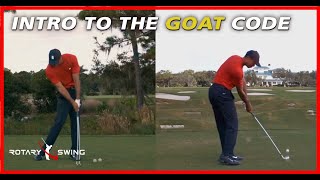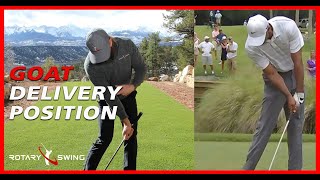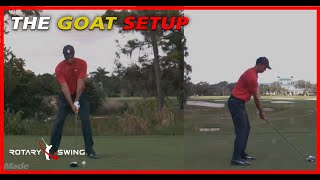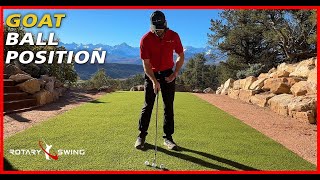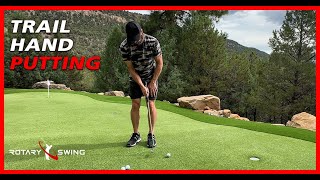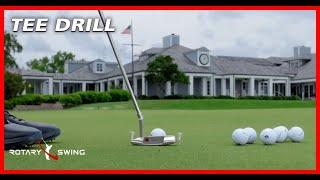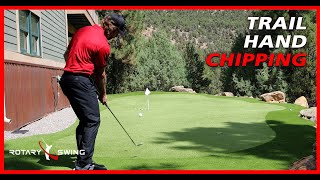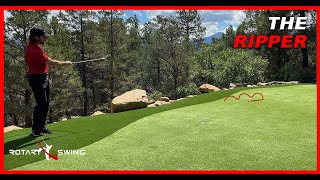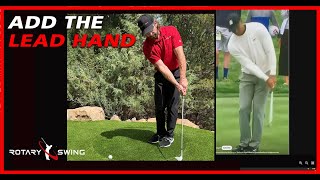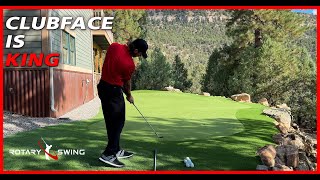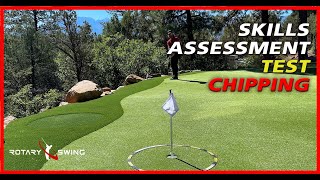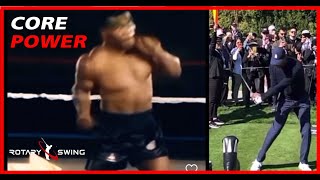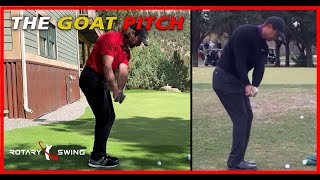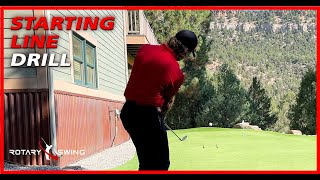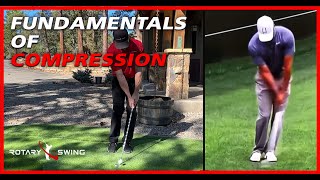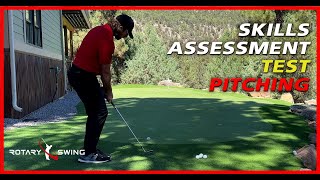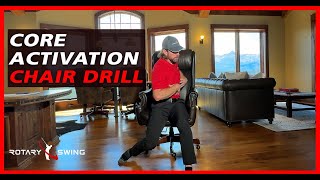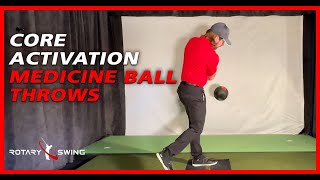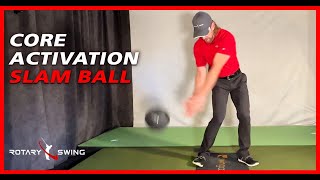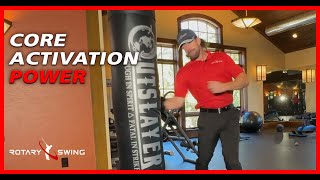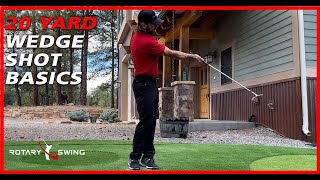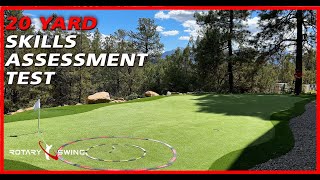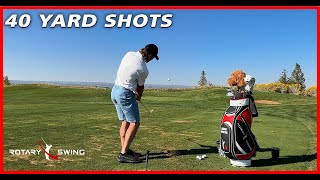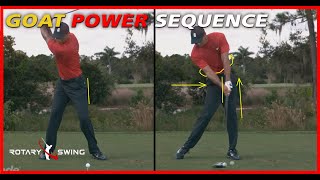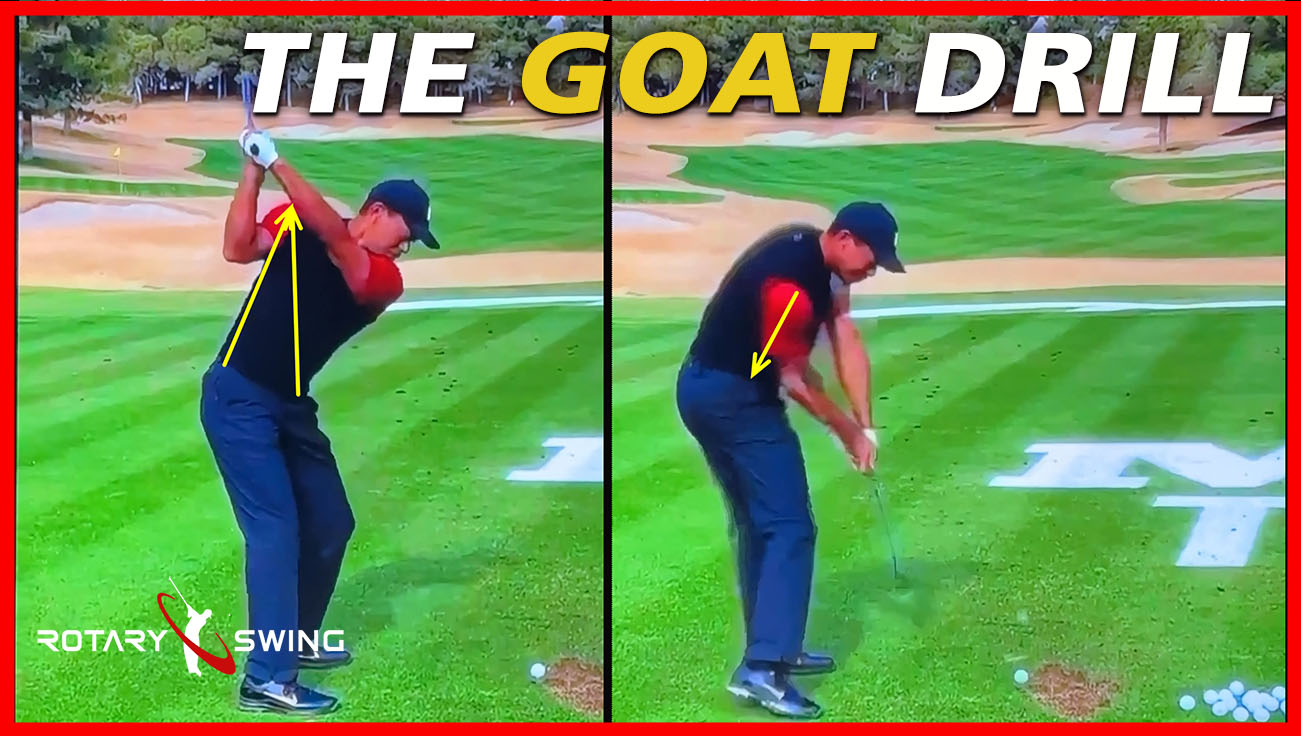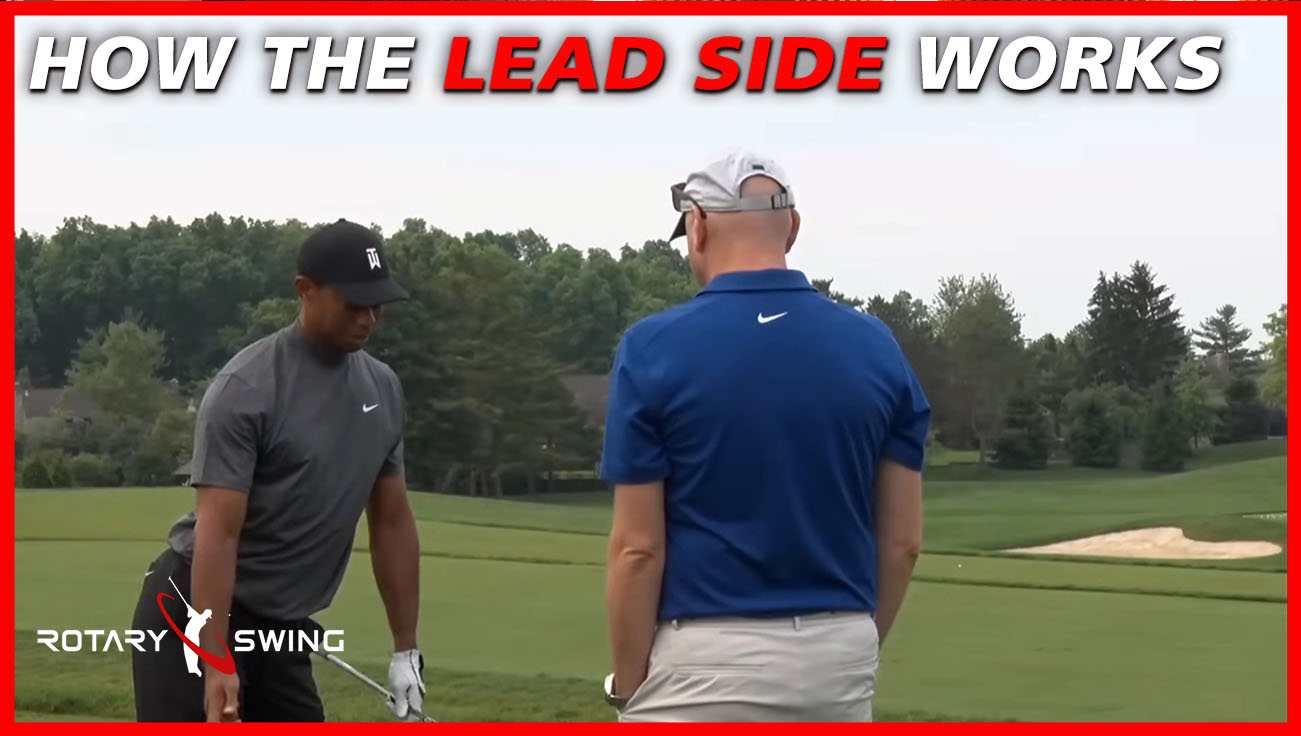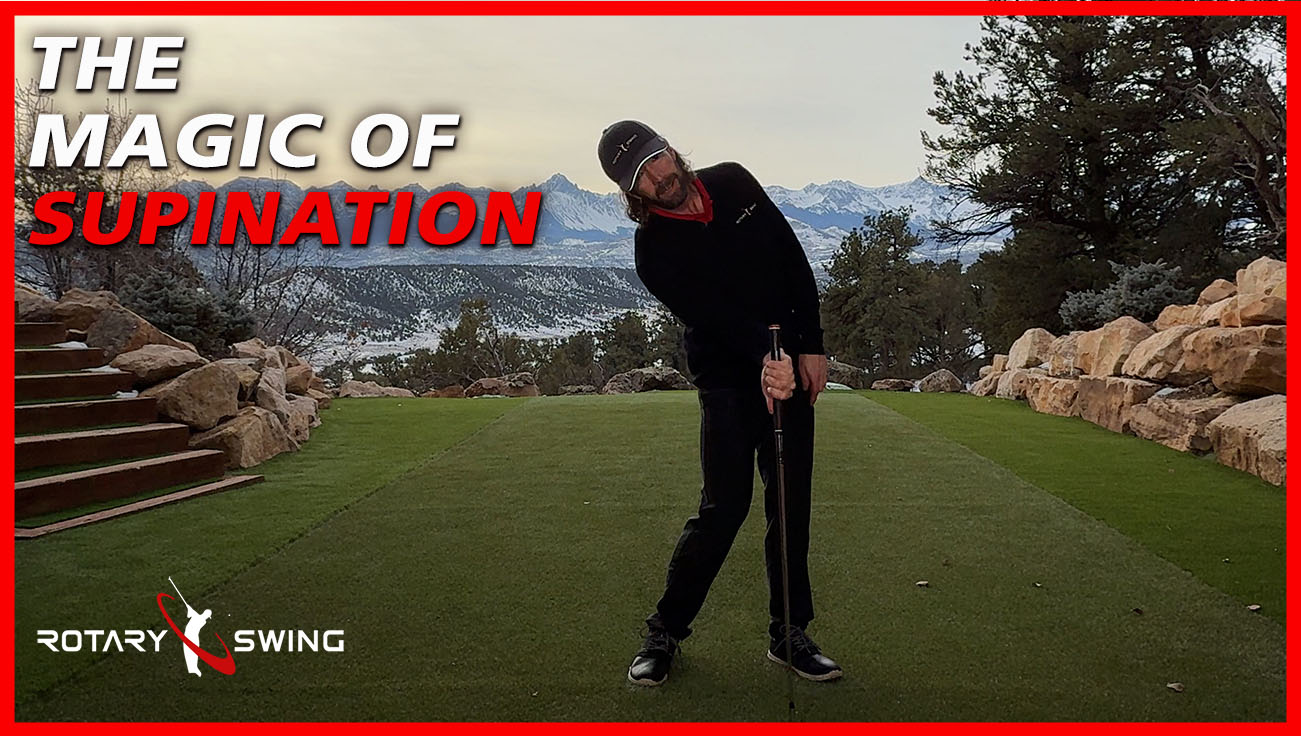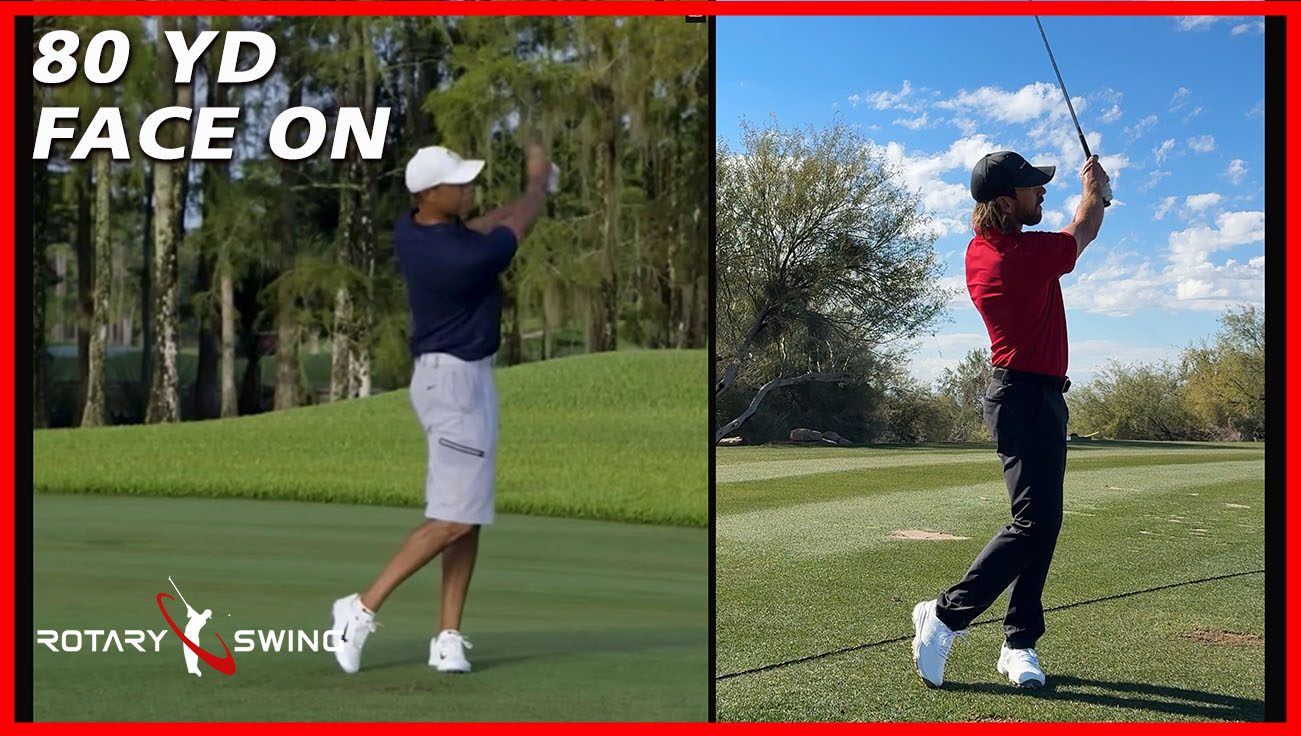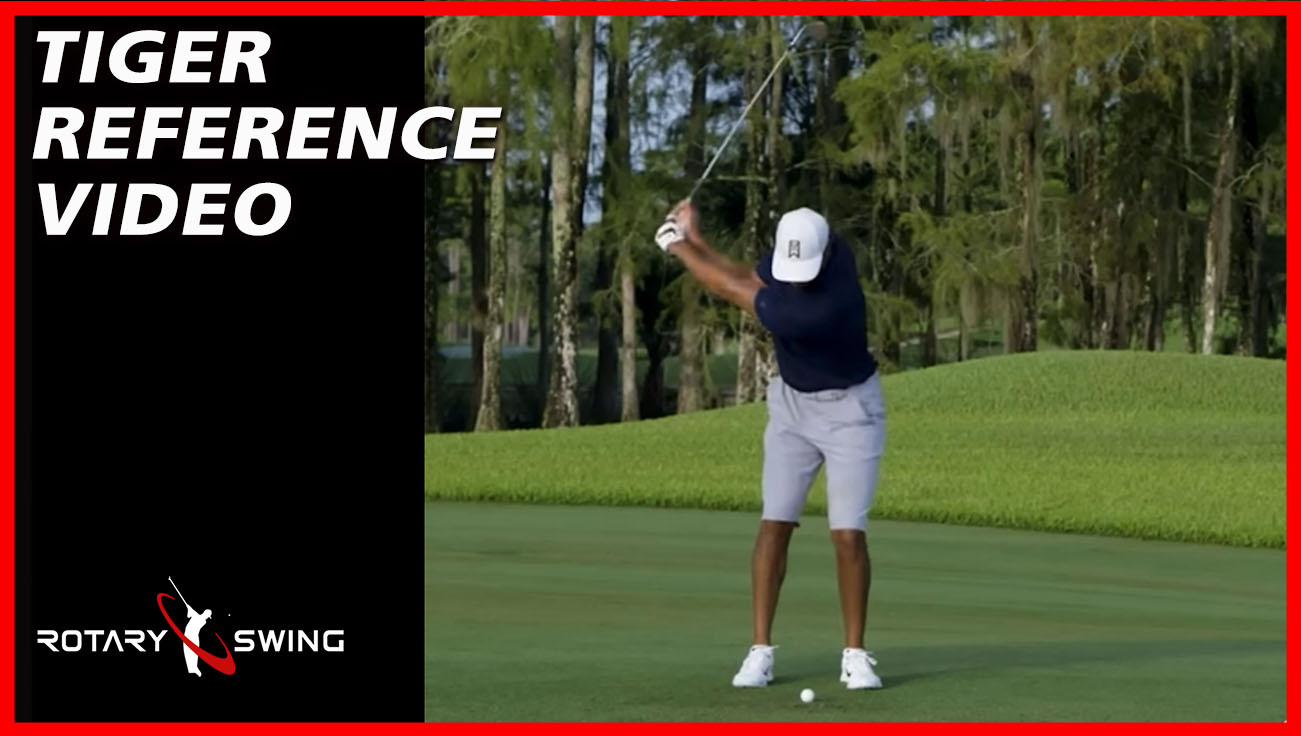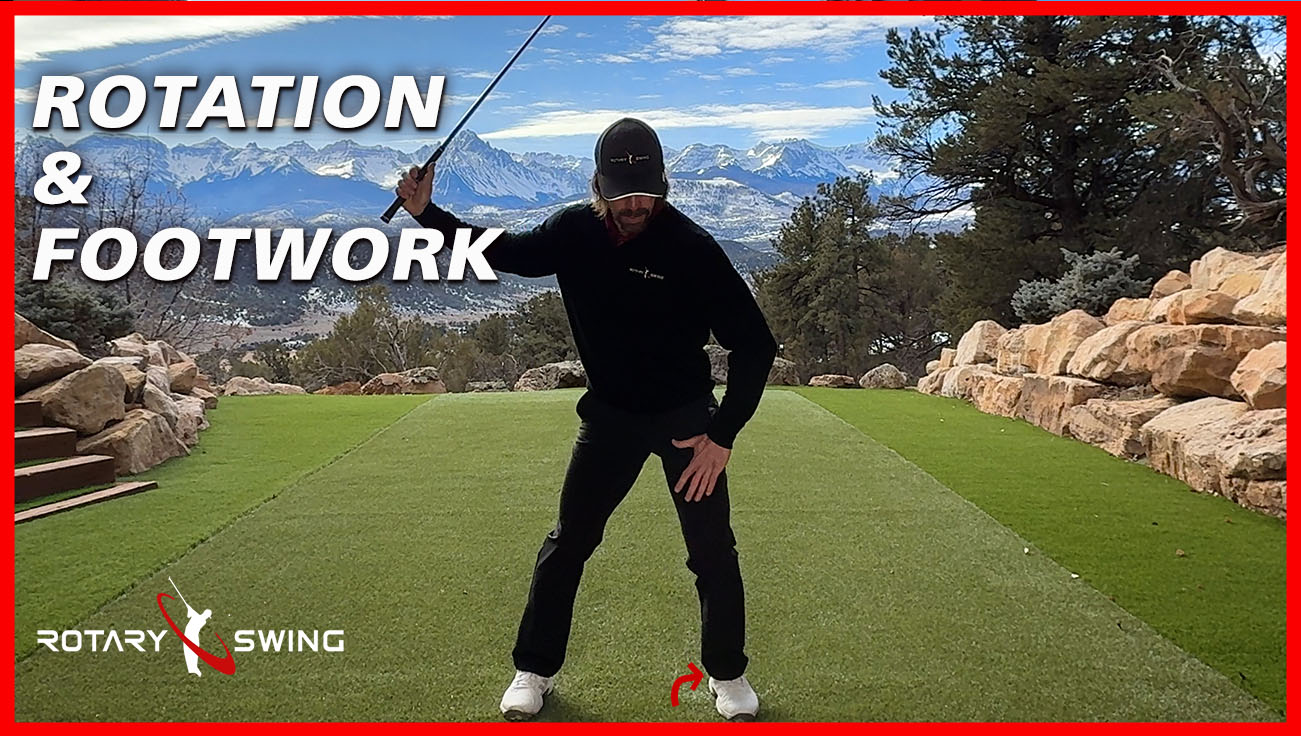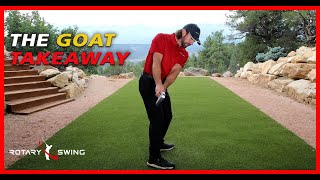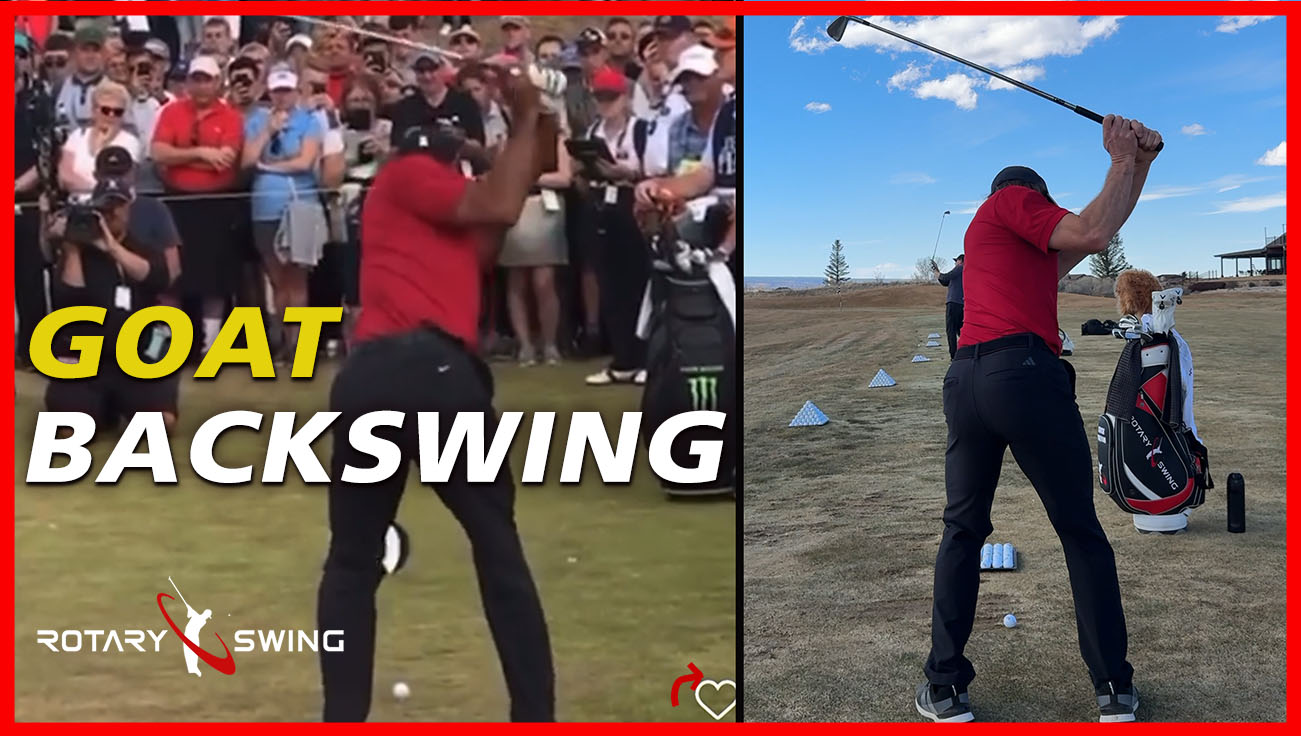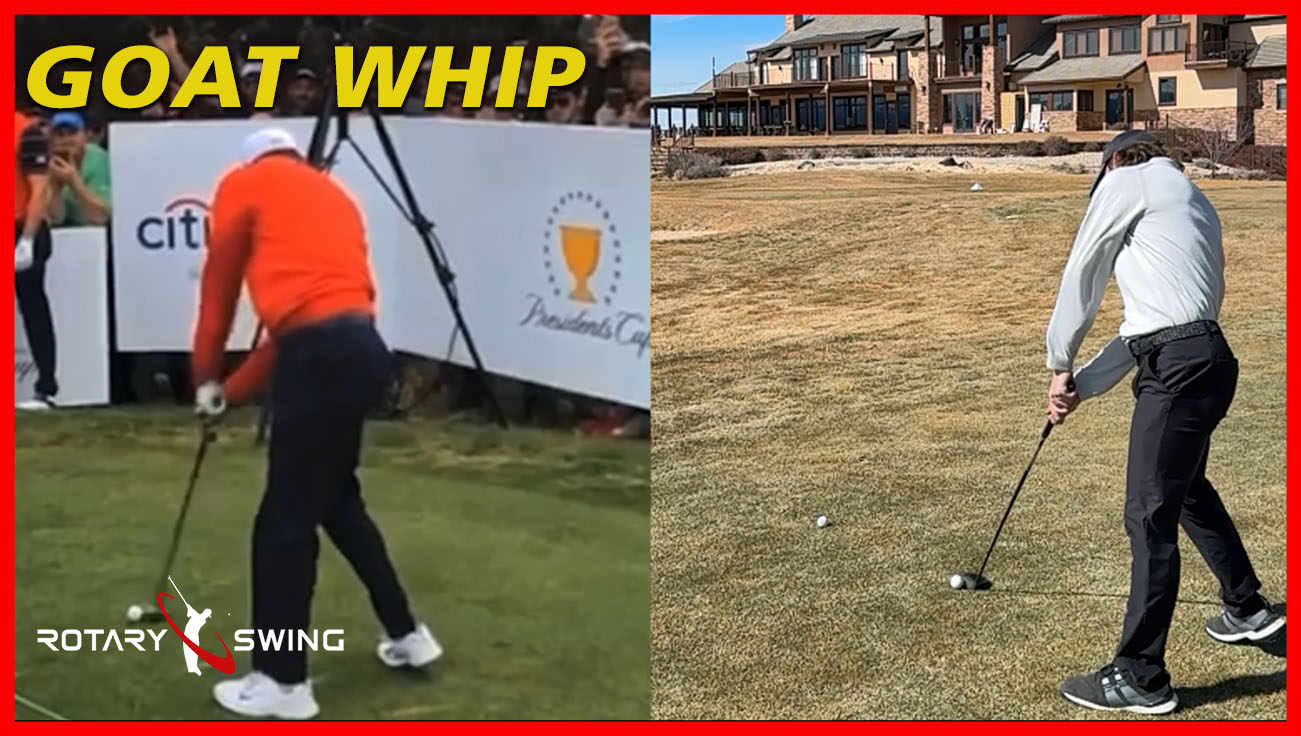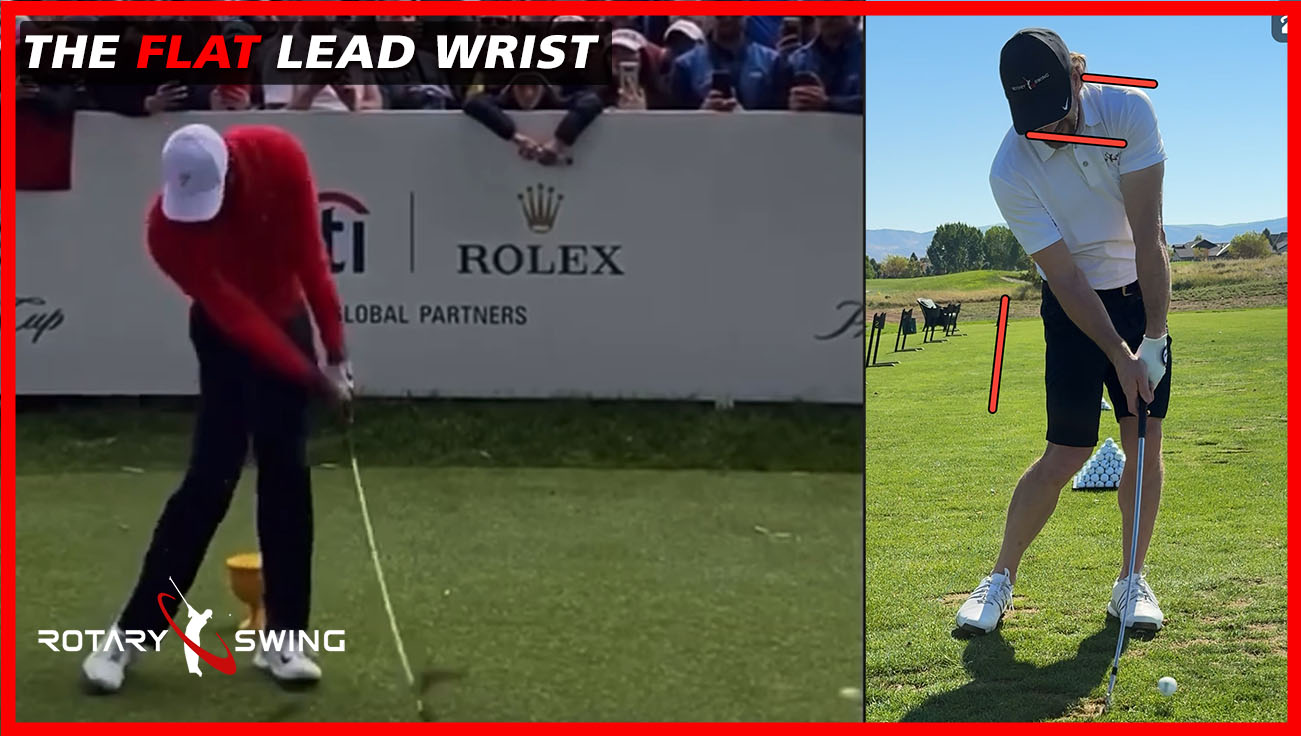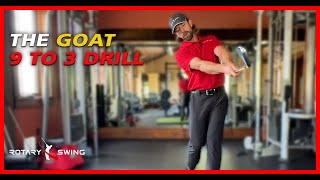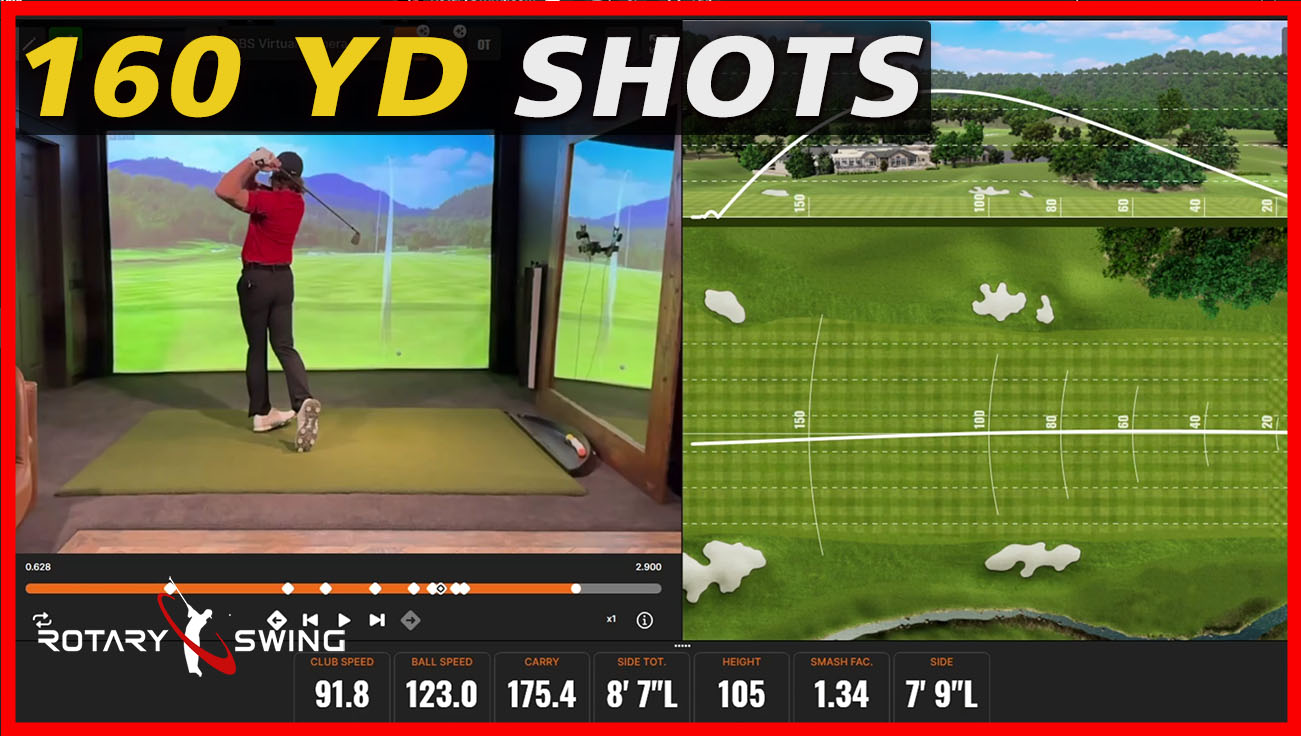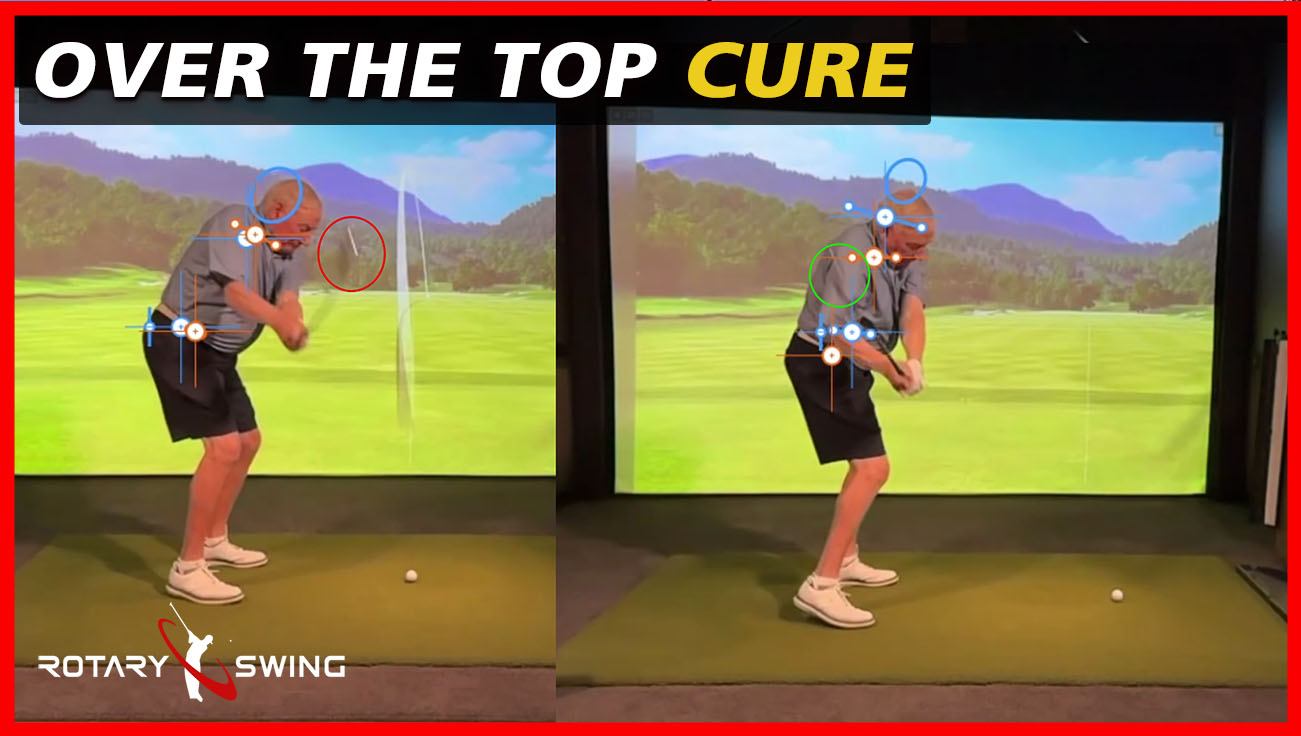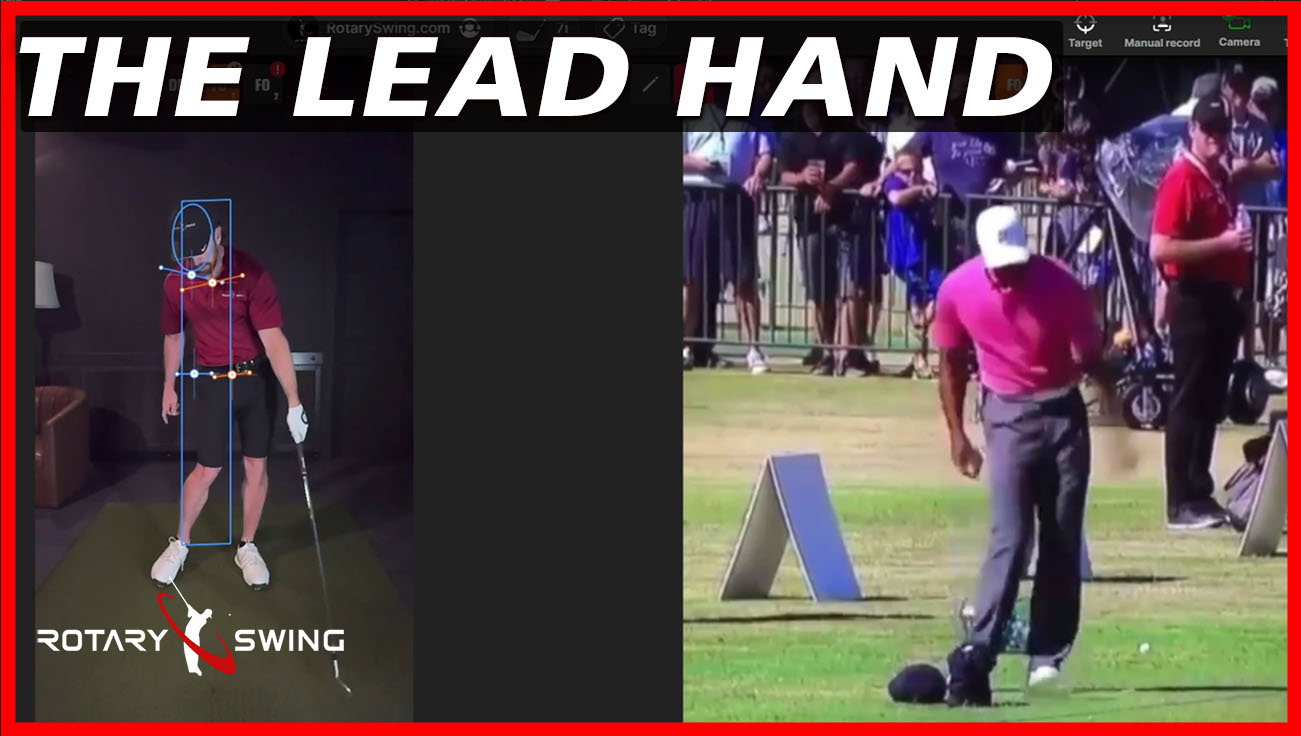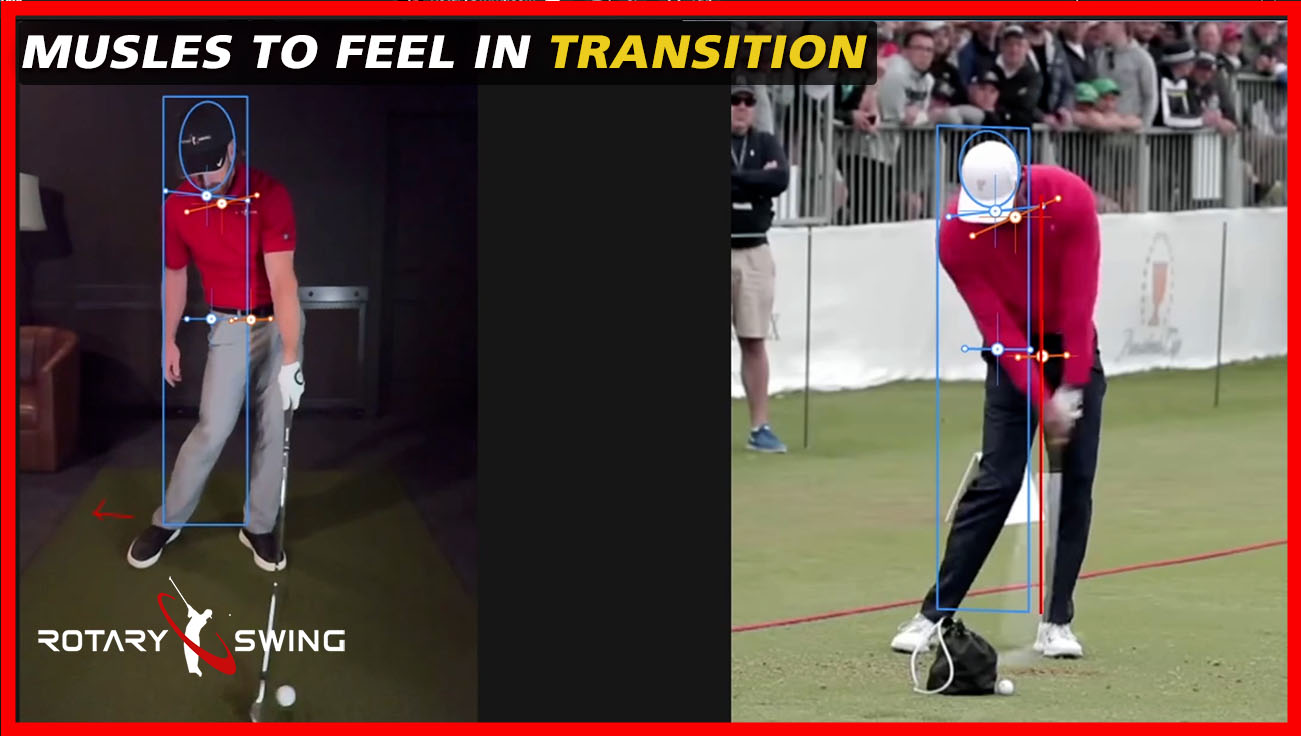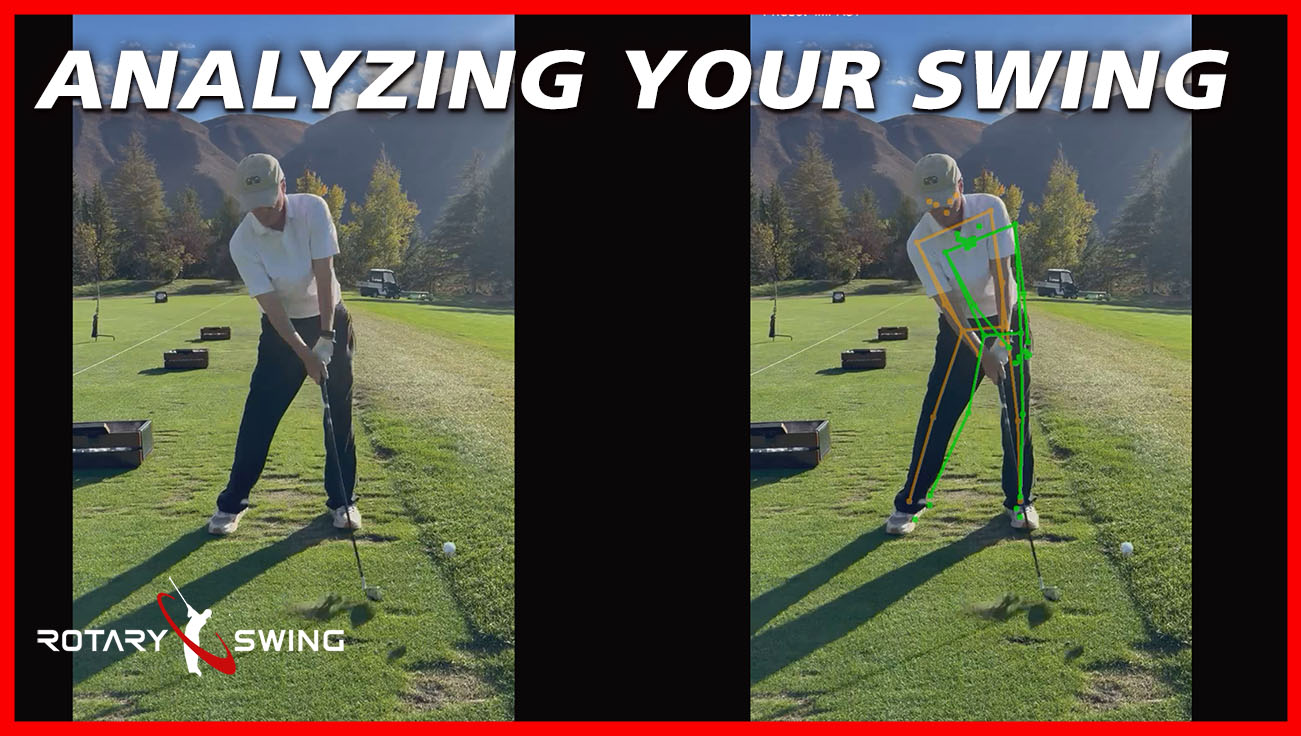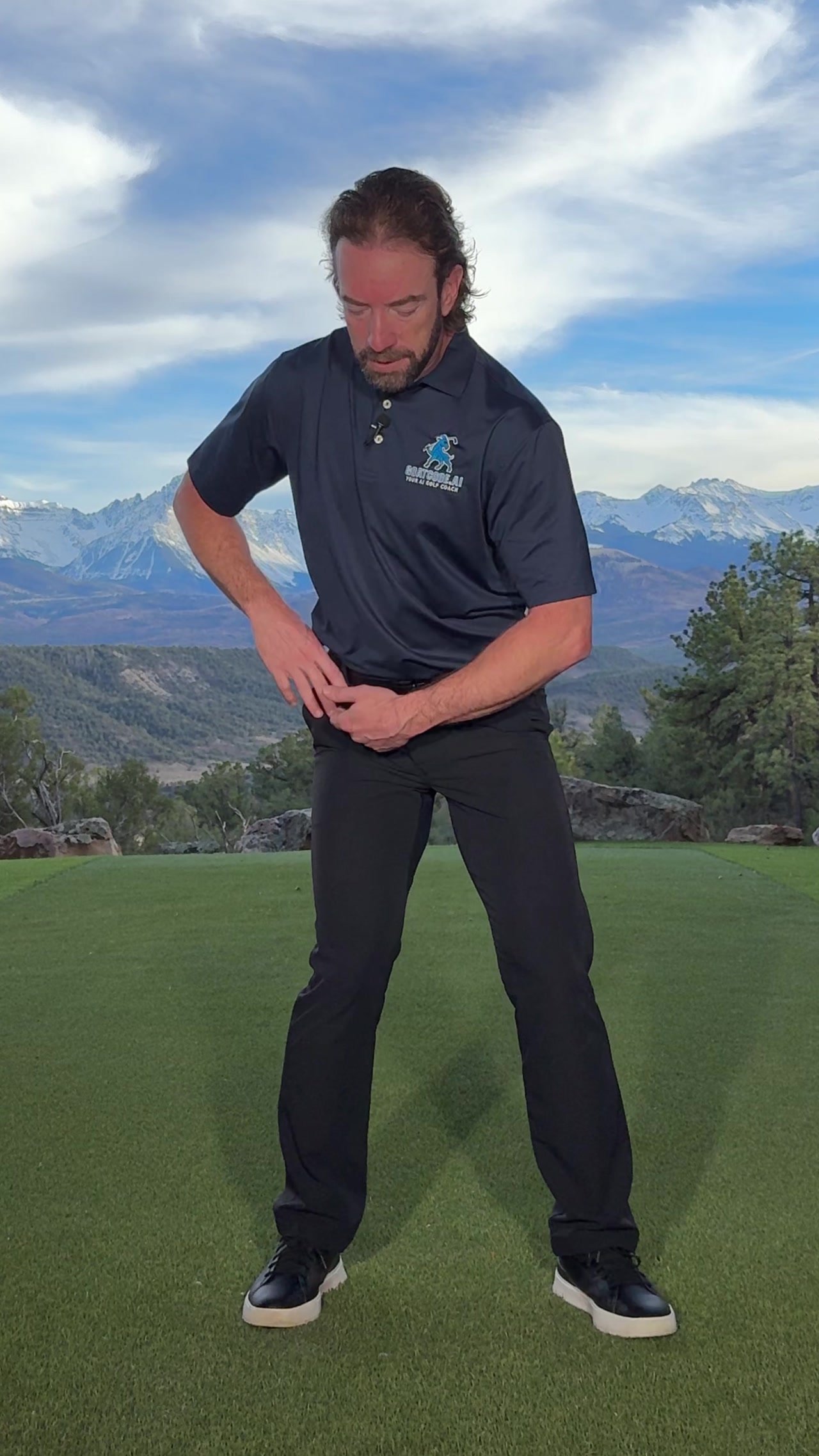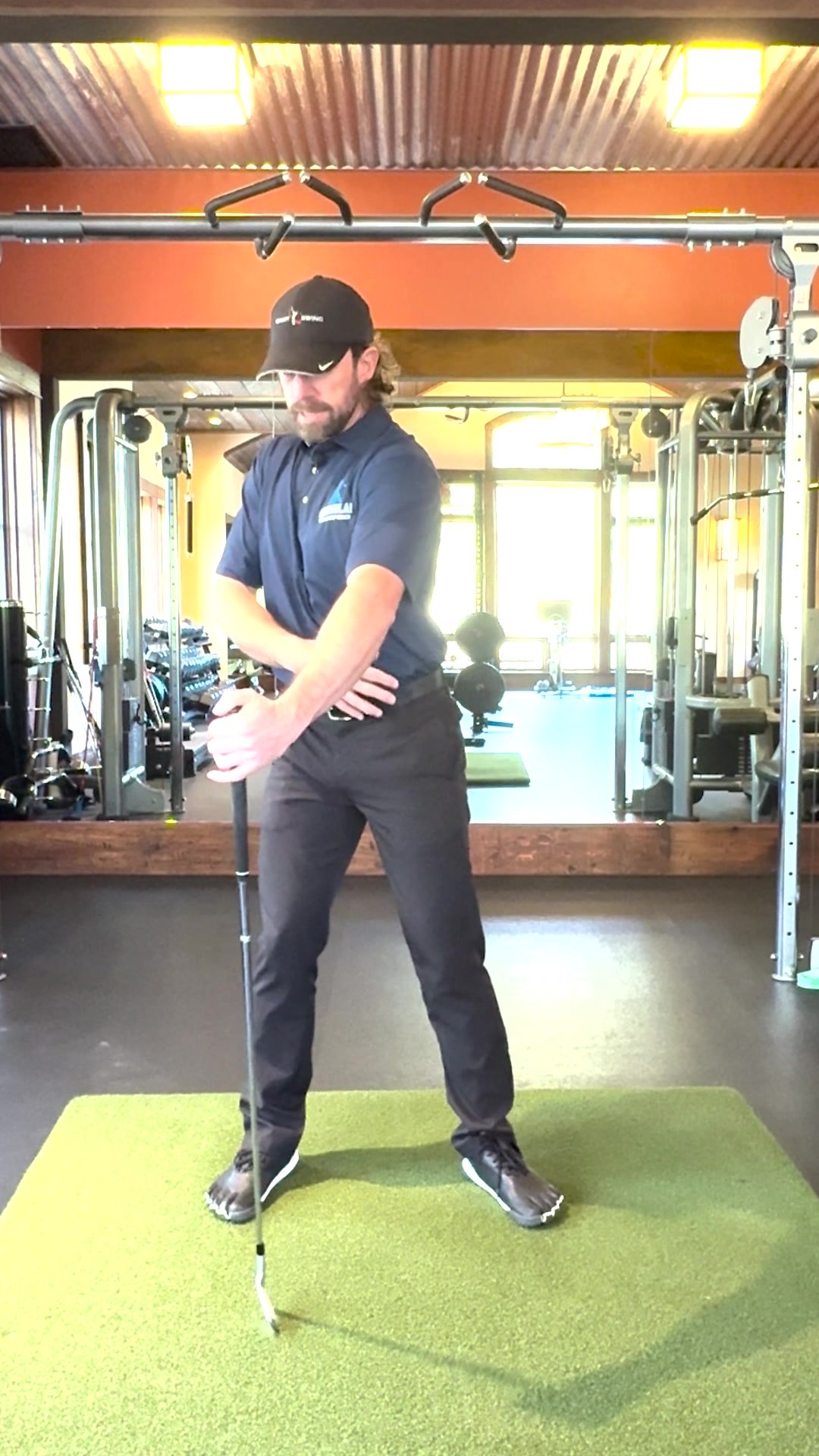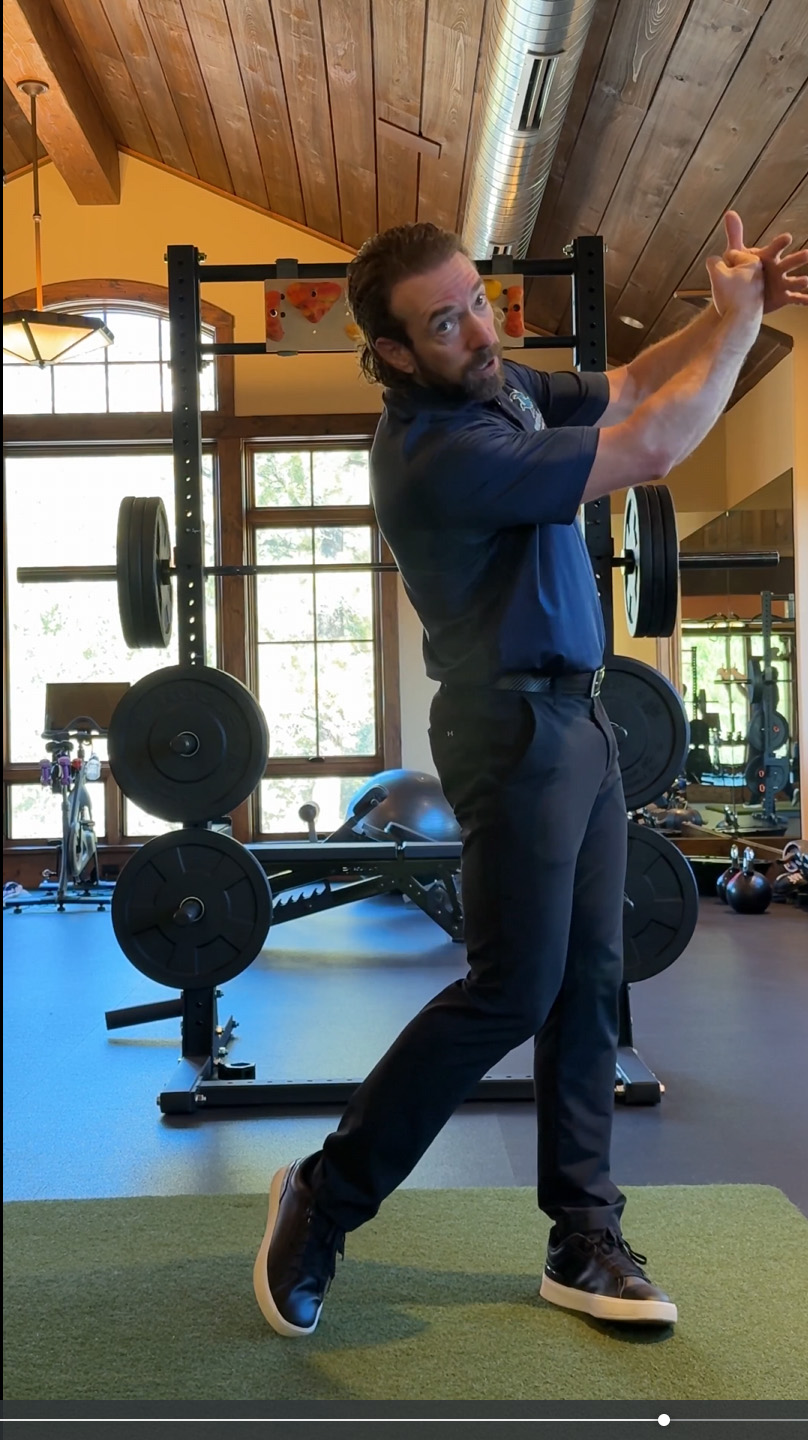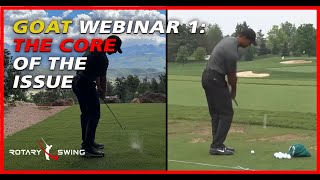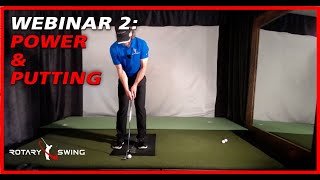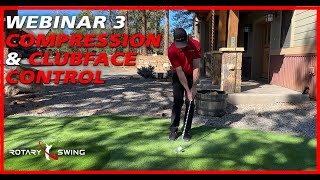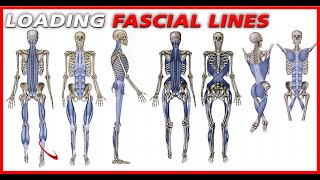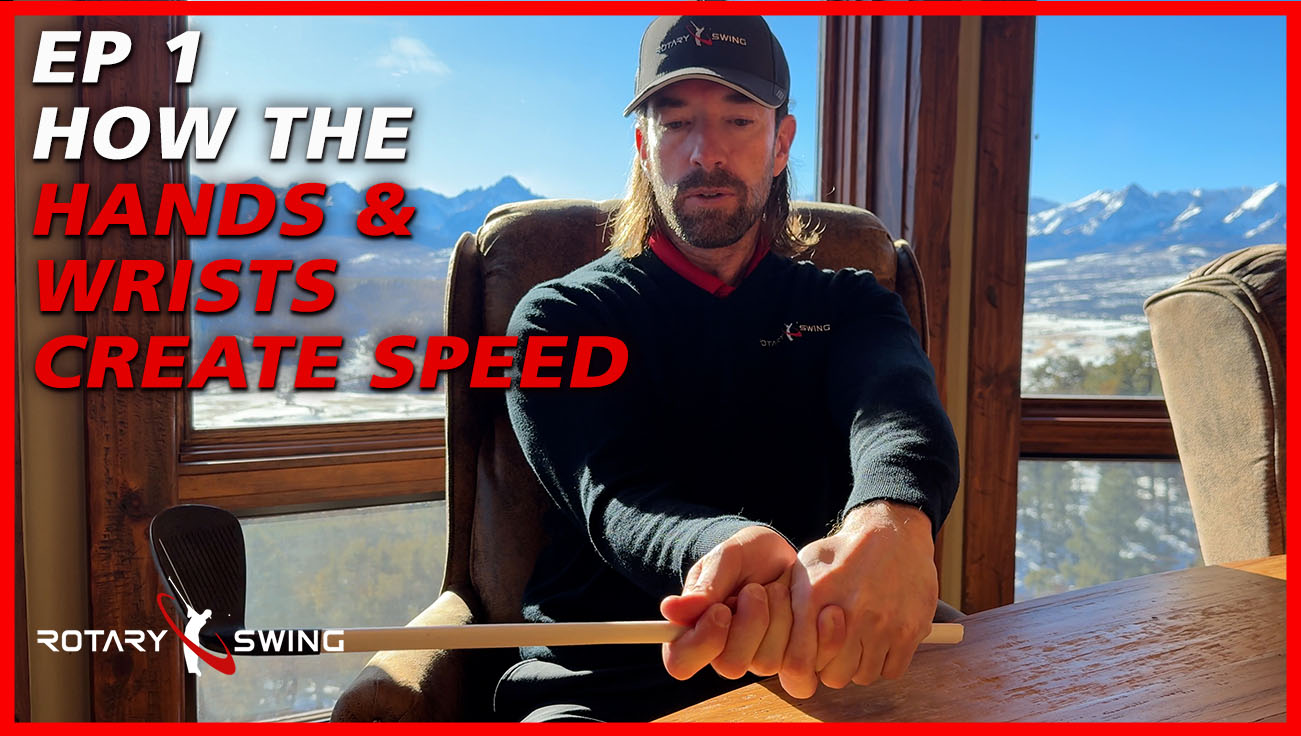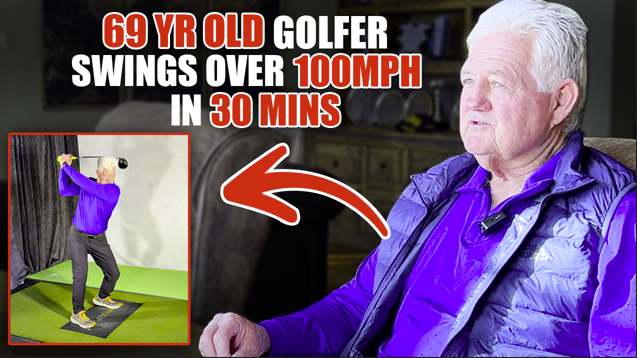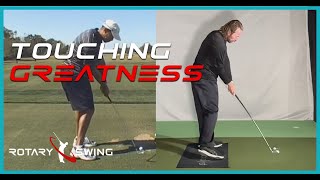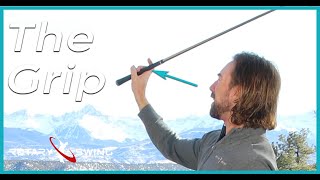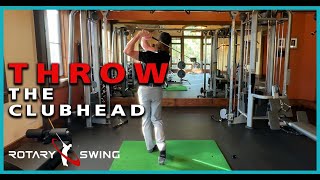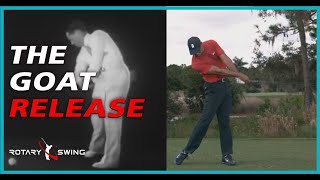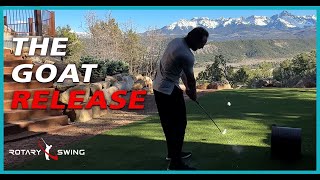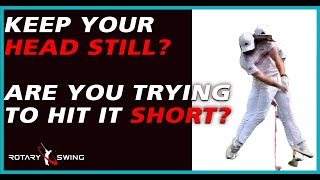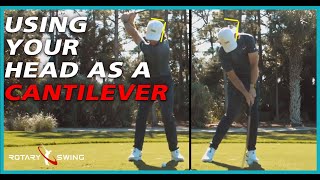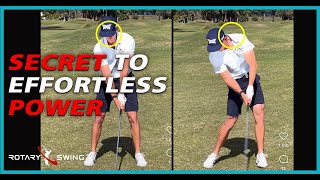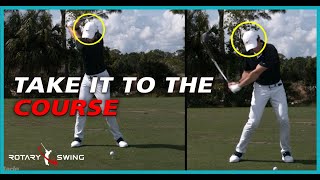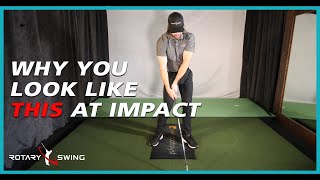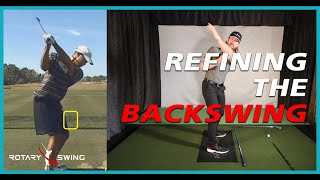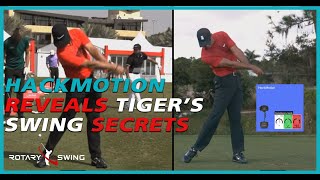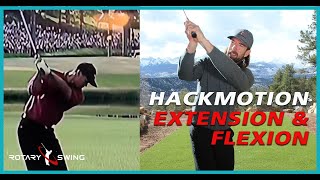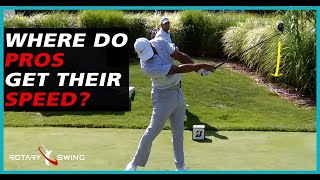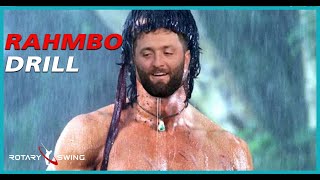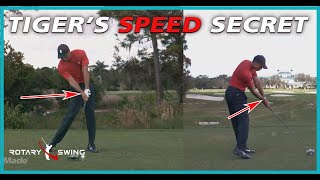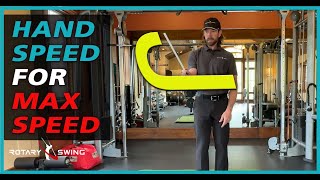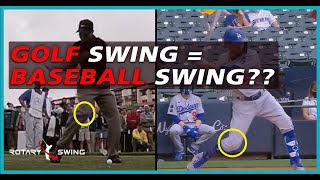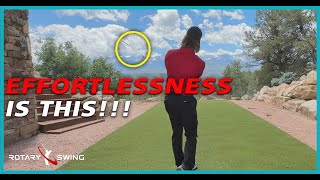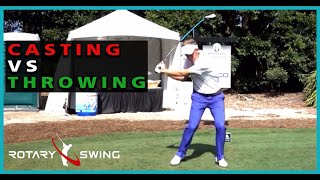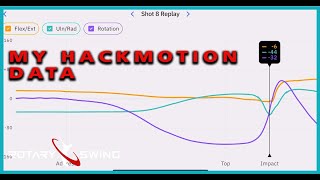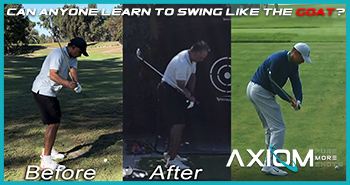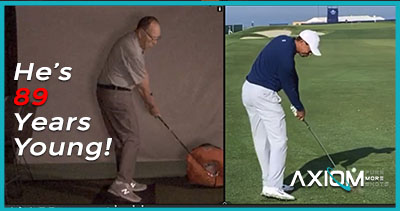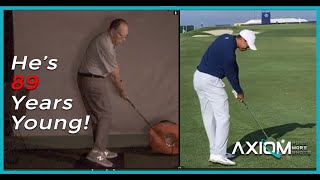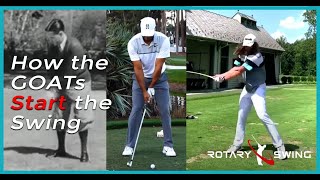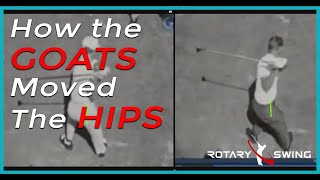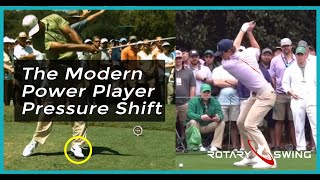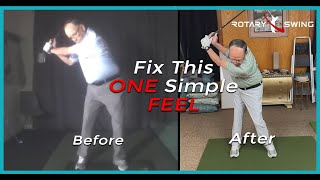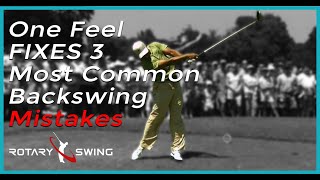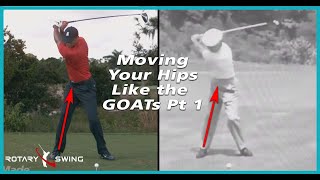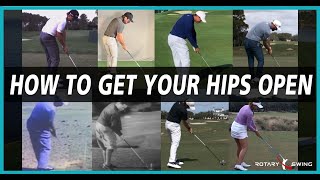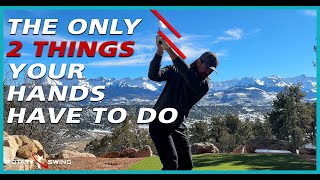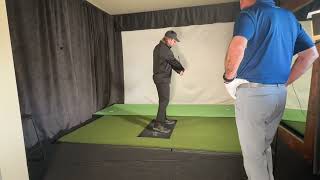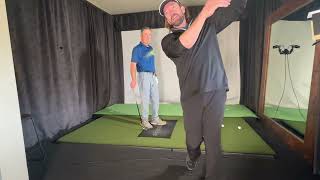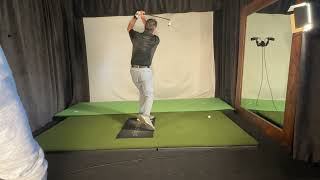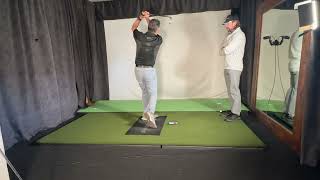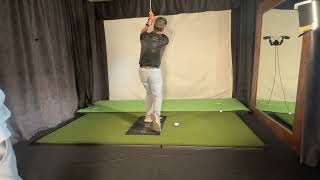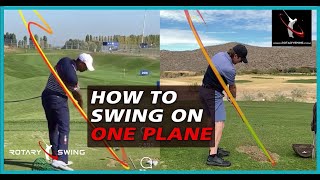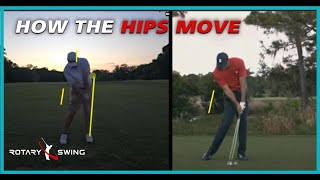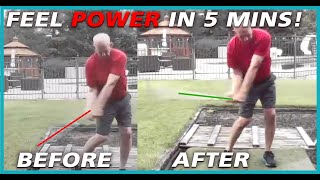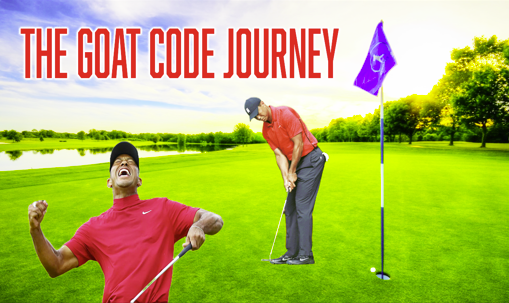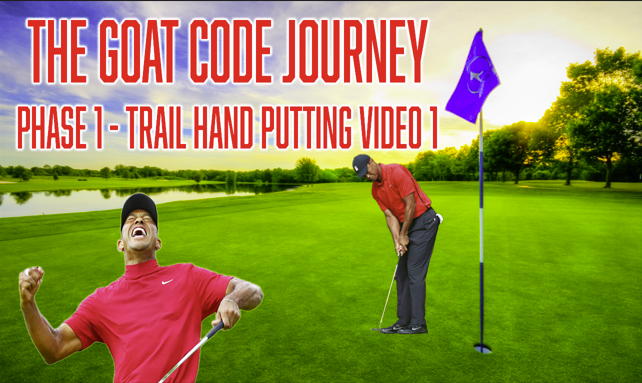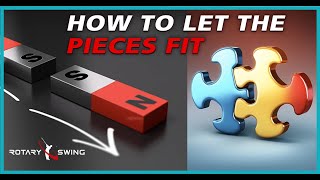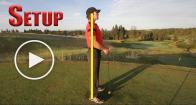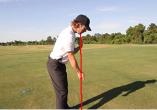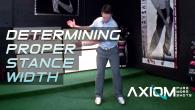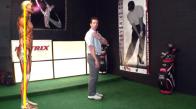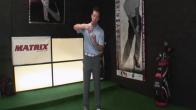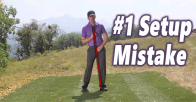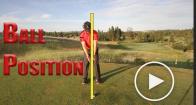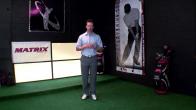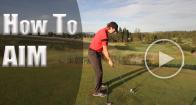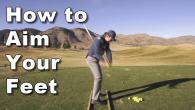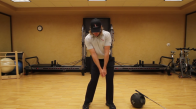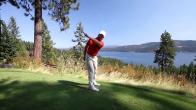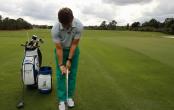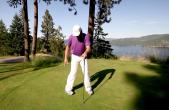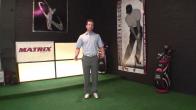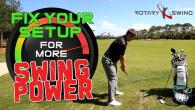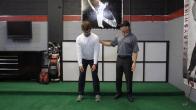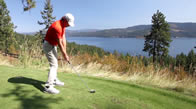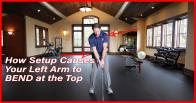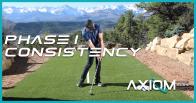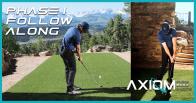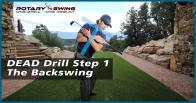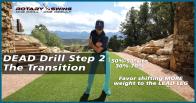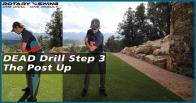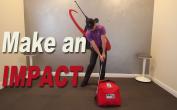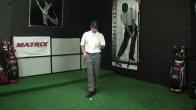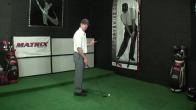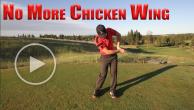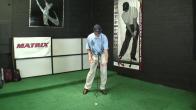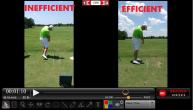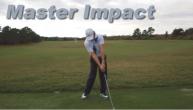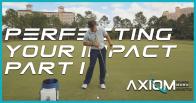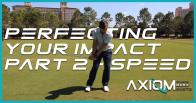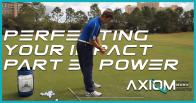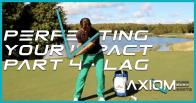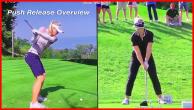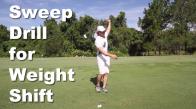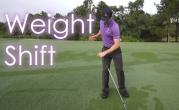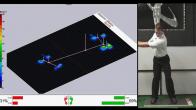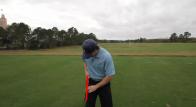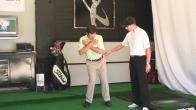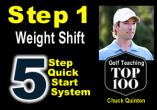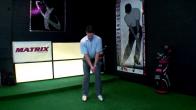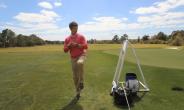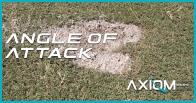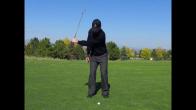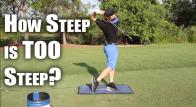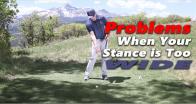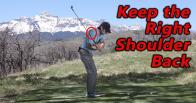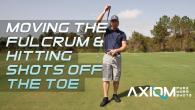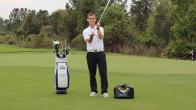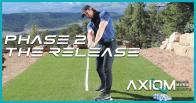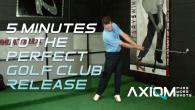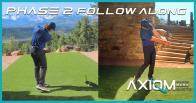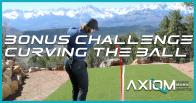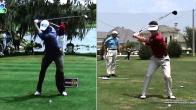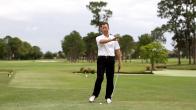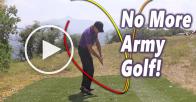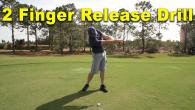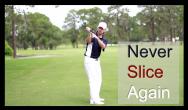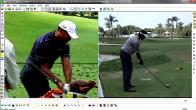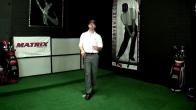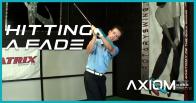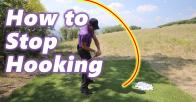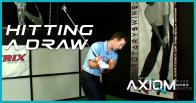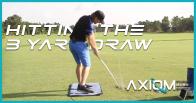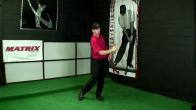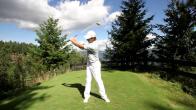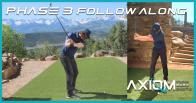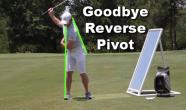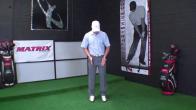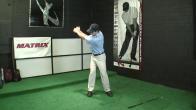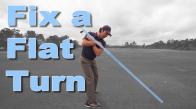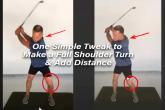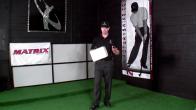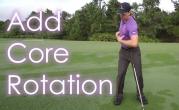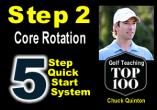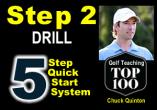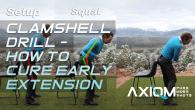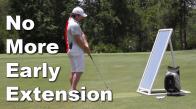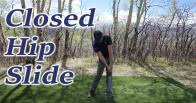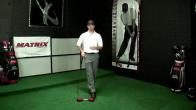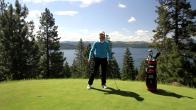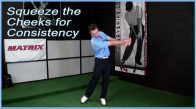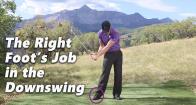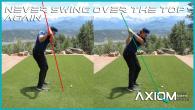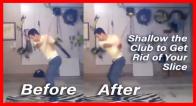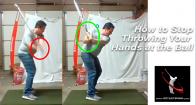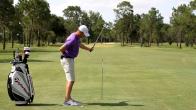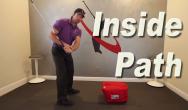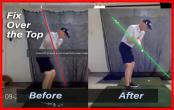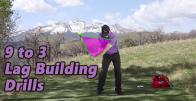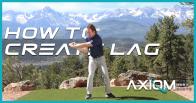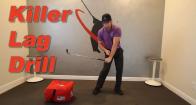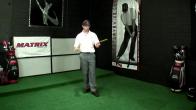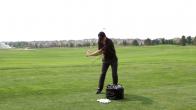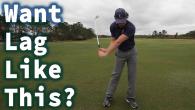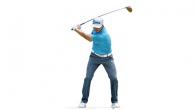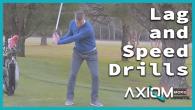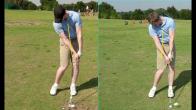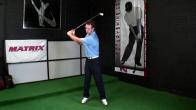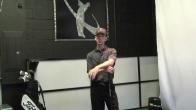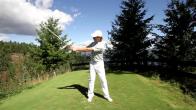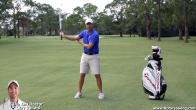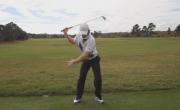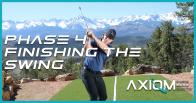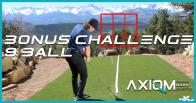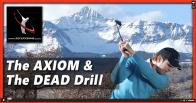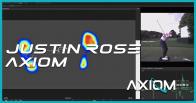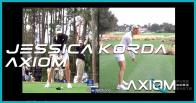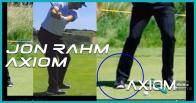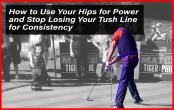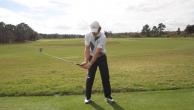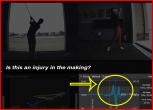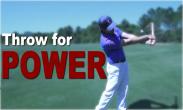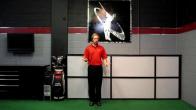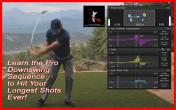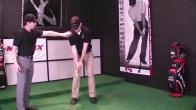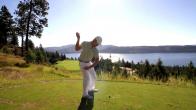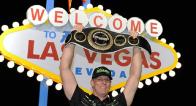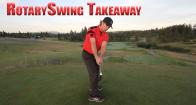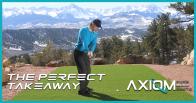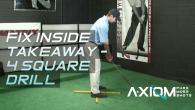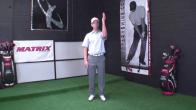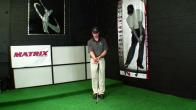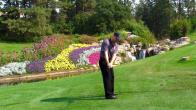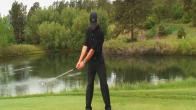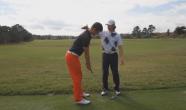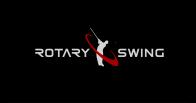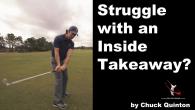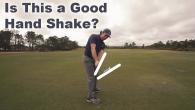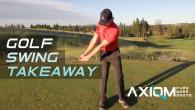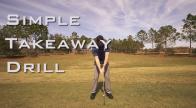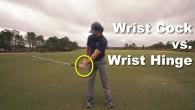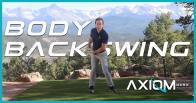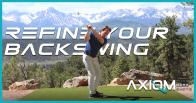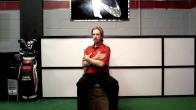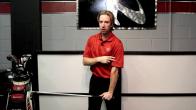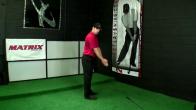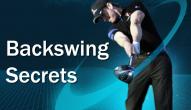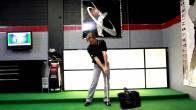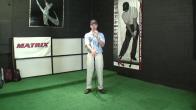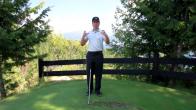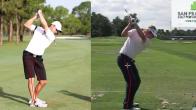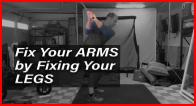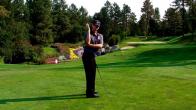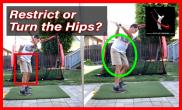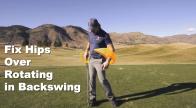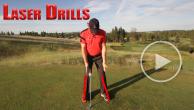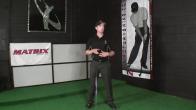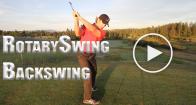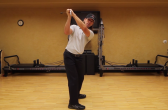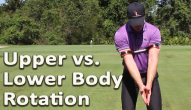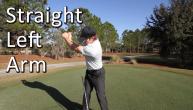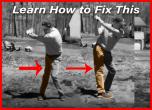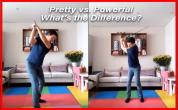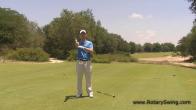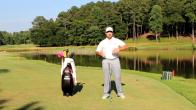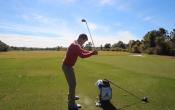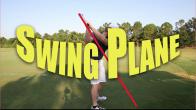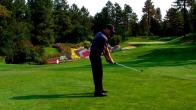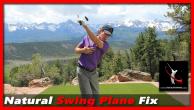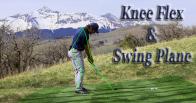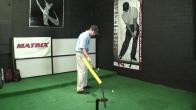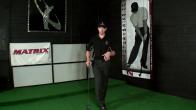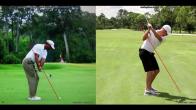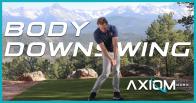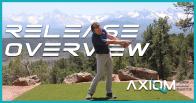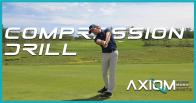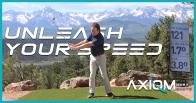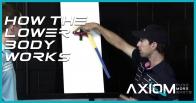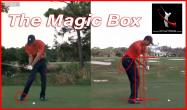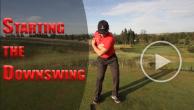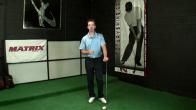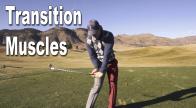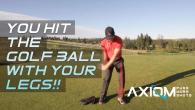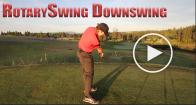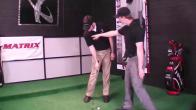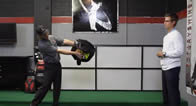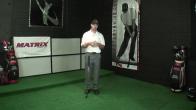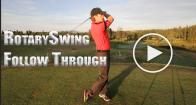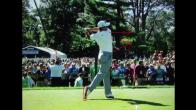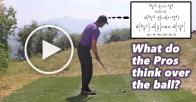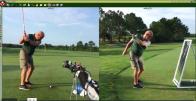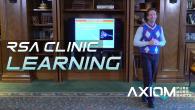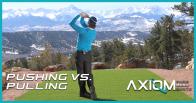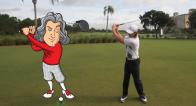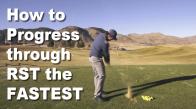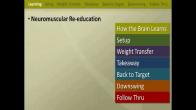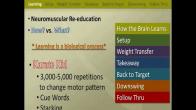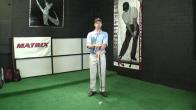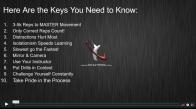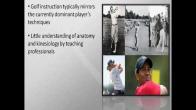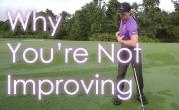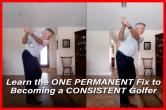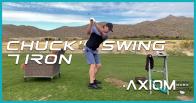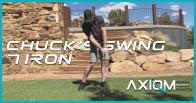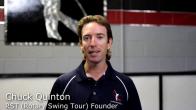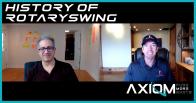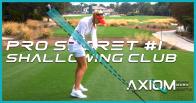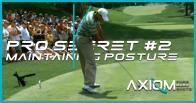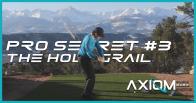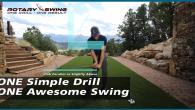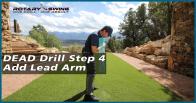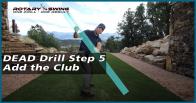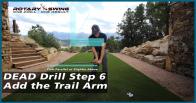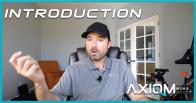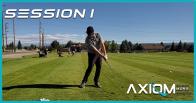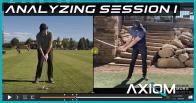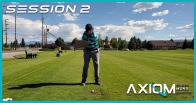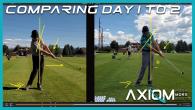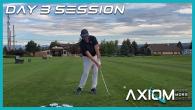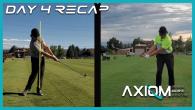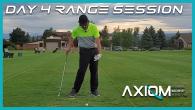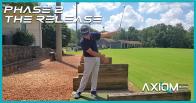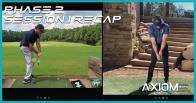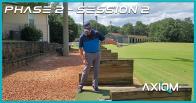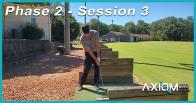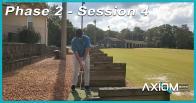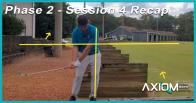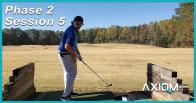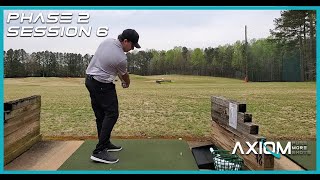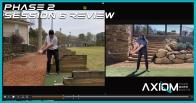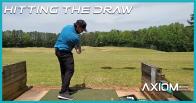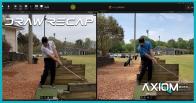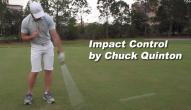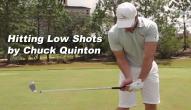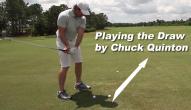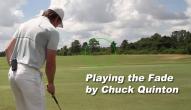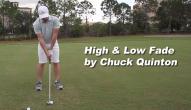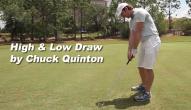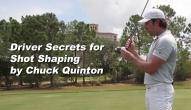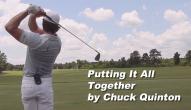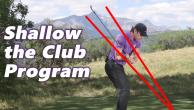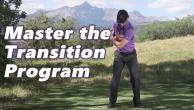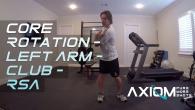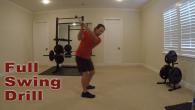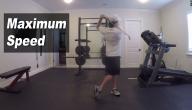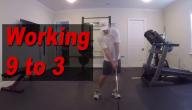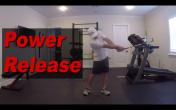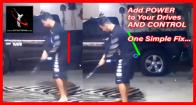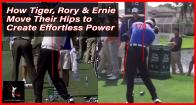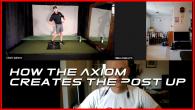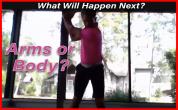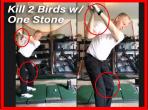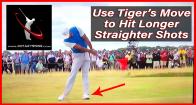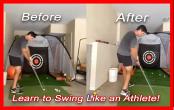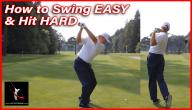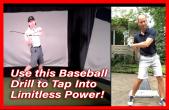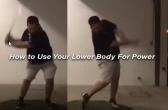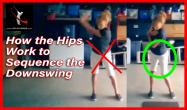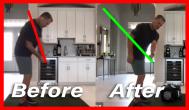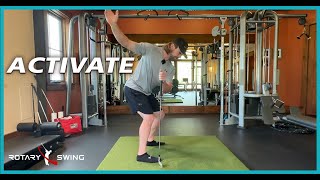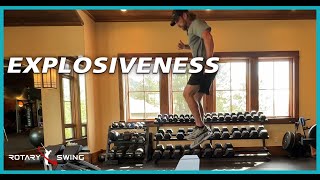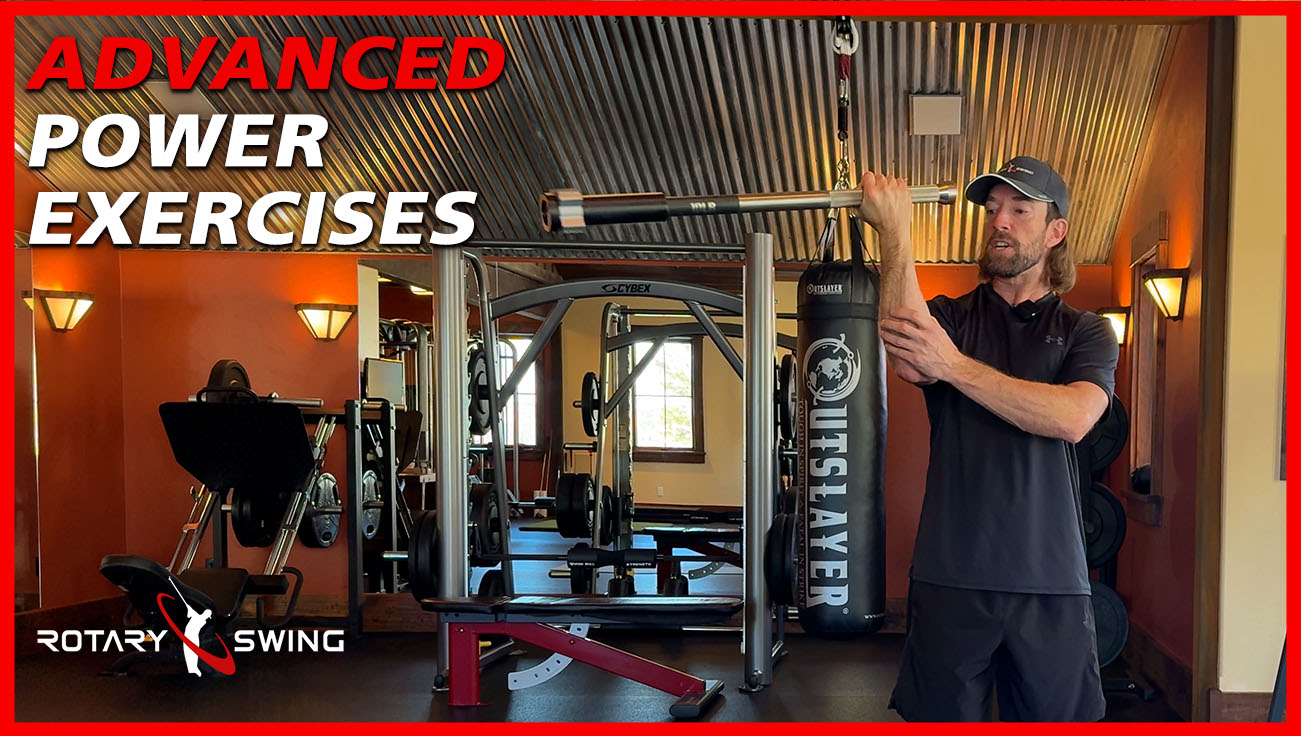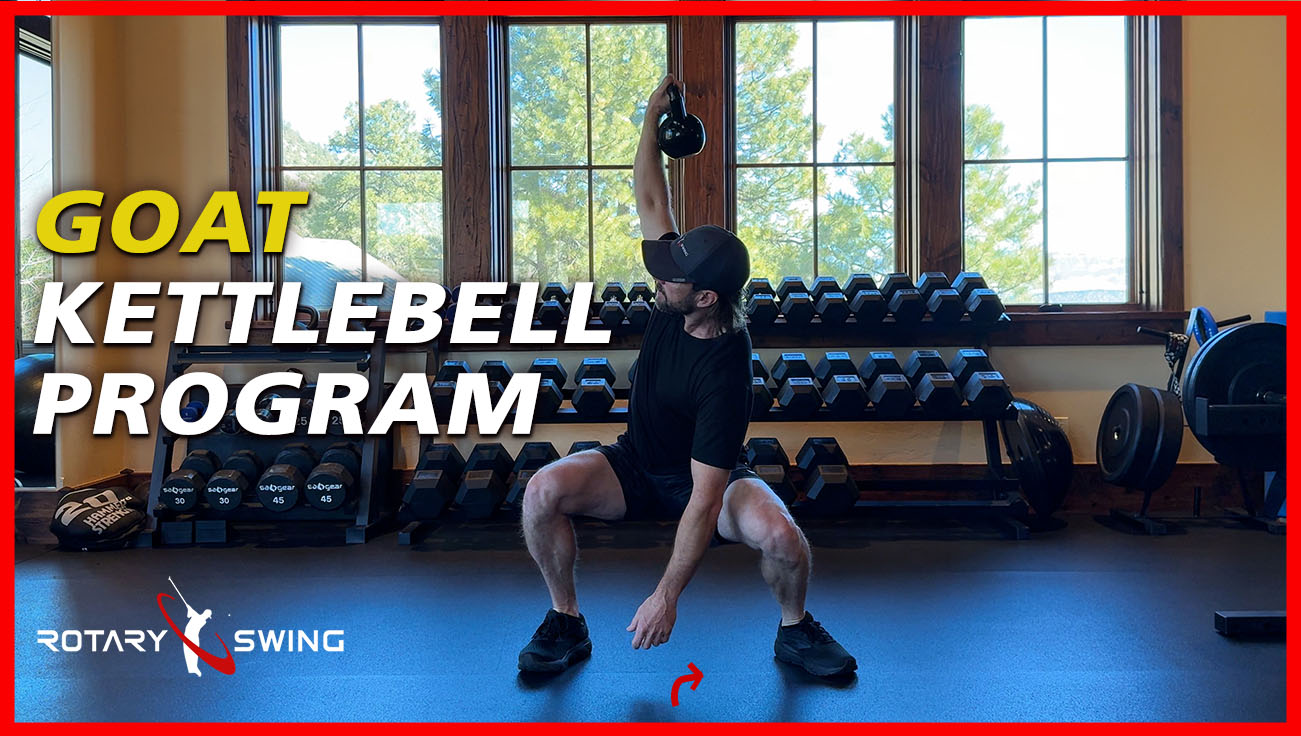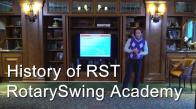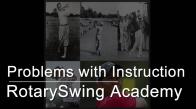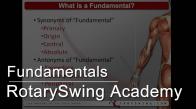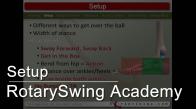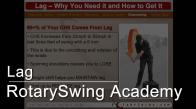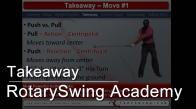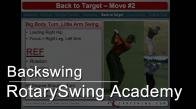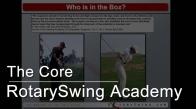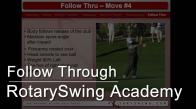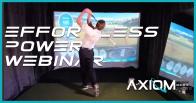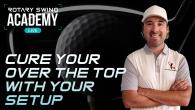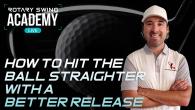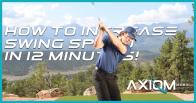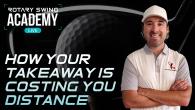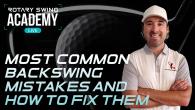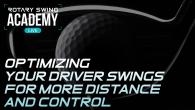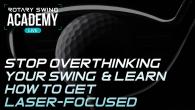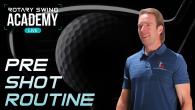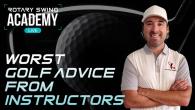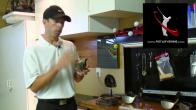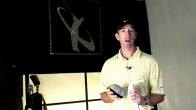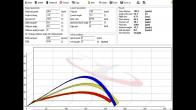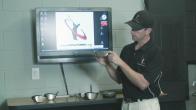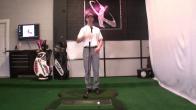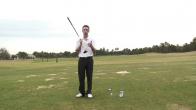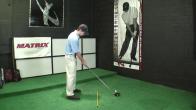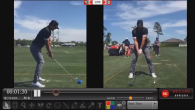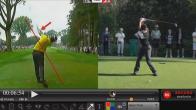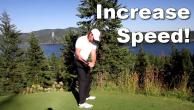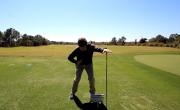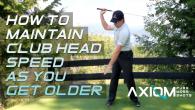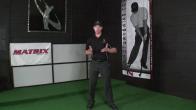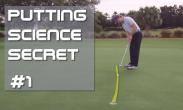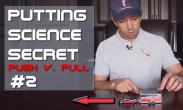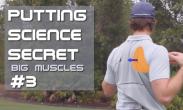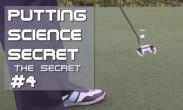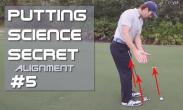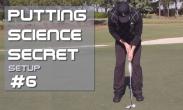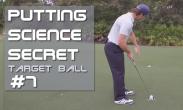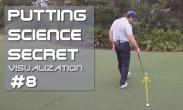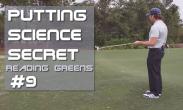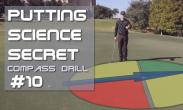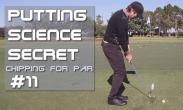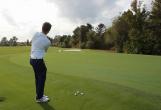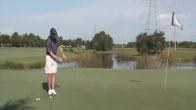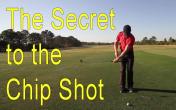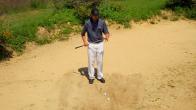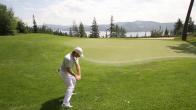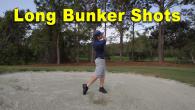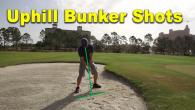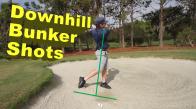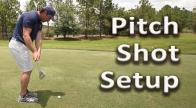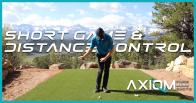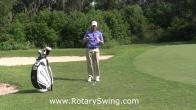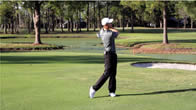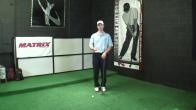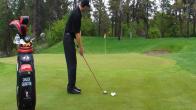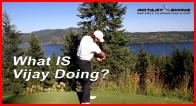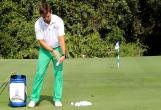Learn How to Make your Practice Sessions more Productive to see Faster Results
In this webinar, Chris shows you how to make your practice sessions more productive in order to see faster results.
Good morning.
Well, I mean, good afternoon for some of you, but good morning to most of you here in the United States.
I know some of you are checking in from other parts of the world.
I've seen some people from the Australia market, New Zealand.
I've seen some people from Europe.
So welcome.
Happy Saturday to you guys.
You guys are here for one of the most boring topics in golf instruction history, and that's practice, right?
So Alan Iverson said it best, practice.
We're talking about practice.
So it might be a boring topic for most of the golfing population, but you guys are here for a reason today, right?
You guys are here to learn how to make your practice sessions work for you, right?
Practice is one of those things we have to do in this stupid, stupid game, because it is a game that requires us to be able to always try to get better and become more consistent.
Because quite honestly, we can sit there and think that we can become masters of this game, but you will never become a master of this game.
Okay?
This game is so, so fickle.
So I'm excited to have you guys all here today.
We're going to be talking about some different scenarios, and I'm going to be teaching you guys a better way to be able to move about your practice sessions to make them work for you.
Now, I know a lot of you at home have probably gone into your practice sessions, and you've worked and worked and worked.
And I get a lot of comments from a lot of my students that say, there's nobody that works harder than me at this stuff.
There's nobody that works harder.
And, you know, a lot of you do work hard.
But if you're not getting the results that you're looking for, and you're not able to translate it to when the golf ball is present, then we're probably doing something wrong.
And so if I could teach every single one of you how to practice properly, then I think that a lot of you would probably get to the end results a little bit on the sooner side.
Now, one thing that you're going to learn from me today is that everybody's a little bit different when it comes to practicing.
So I'm going to teach you guys how to move into your practice session, or customize your own practice sessions, so that when you go into REM sleep at night, that your brain is actually indexing this information properly rather than just kicking it out the door.
So I do see quite a few familiar faces in the chat.
For those of you that don't know who I am, my name is Chris Tyler.
I am a master certified instructor here at RotarySwing .
com.
I've been teaching golf for just over 19, almost 20 years now.
I've been playing golf for 34 of my 39 years in existence.
I played golf professionally for a very short stint.
I learned very quickly that I did not like pressure.
As a kid, I loved it.
That's what I used to win lots of golf tournaments with.
So I loved pressure.
I was a very well -decorated amateur junior player where we didn't have any fear back then, right?
And so as soon as I started playing for money, I remember the day.
And I was shaking so bad on the first tee that I couldn't even pull the trigger.
And the whole day just progressively got worse and worse and worse with nerves.
And it stayed like that for a while.
And so I removed myself from professional golf.
And now I get to help people like you guys all over the world play this crazy game.
And I find this to be the most enjoyable thing.
This is the most enjoyable thing for me because I'm in golf still.
And I get to watch you guys hit the golf ball really well, which is fun, right?
It really is.
To go out there and watch you guys hit compressed shots, to be able to see the smiles on your faces.
And I know it's not all rainbows and flowers most of the time, right?
But to see you guys just hit that one shot, it's pretty awesome.
So good morning to everybody.
Hopefully everybody's had a wonderful week so far.
Happy Saturday to you guys.
Thank you for taking time out of your day to come talk to me about practice.
Now, the first thing that I want you guys to know about your practice sessions is that they're basically like a big living document, right?
They can always be adjusted.
I want you to make adjustments.
But your adjustments that you're going to be making to your practice sessions are really, really key because you want to know why you're making that adjustment and how it's going to affect you ultimately.
Now, I could geek out on neuroscience all day long, right?
I could talk to you guys about the ins and the outs of the way the brain processes information.
I could talk to you about your vestibular process.
I can talk to you about proprioception, all of that stuff.
But what I want you to remember is that a few things here, before we get into the nuts and bolts of today's program, is that every single practice session that you do that you want to be meaningful, you have to have at least 100 to 300 repetitions done in that day.
100 to 300 repetitions need to be done.
That's the sweet spot.
That's where the brain will actually keep that information.
Instead of when you go into REM sleep at night, if you don't do enough of this new activity, what it does is it goes, kicks it out the door.
It doesn't say, nope, we're going to get rid of that.
Okay, so you must try to achieve 100 to 300 reps.
Now, that can seem very daunting.
That can seem like a very big number.
But if you break it up into sets, and I'll teach you how to do that here in just a little bit, and you're accurately looking at the way that you're moving through the sessions, then 100 reps is actually pretty easy to achieve.
Now, I understand that we have other things going on in the way of golf.
I understand that we have families, and we have very limited time, we have jobs.
So if you do some reps, right, if you do 50 reps or 60 reps, and you don't hit that 100 to 300 mark, it doesn't mean that it's not working for you.
Okay, it's just your processes are going to be lengthened.
Now, one of the things that people have trained themselves to think is that at 3,000 to 5,000 repetitions, when I get that 3,000 to 5,000 rep mark done, that I'm going to be on the PGA Tour, right?
Now, here's the, I'm going to deflate your balloon sort of speech.
Old movement patterns never die.
I wish they did.
I wish we could unlearn things.
But old movement patterns never go away.
Which kind of sucks for me to say to you, right?
Because you could work on these things for eight straight months.
You could be doing the right things, and it just takes one little bit of distraction, one little consequence, and your brain will flip to the movement pattern that's got the most repetitions under its belt.
Now, let's talk about that here for a second.
Your brain is filled with all of these highways, all of these pathways, right, that you've taught it over these years, right?
So whether it's driving a manual transmission or swinging a golf club.
So these movement patterns become really, really strong when you put repetitions in, right?
There's this stuff called myelin, and it's a fatty substance that forms itself around the axis of the neuron.
And this fatty substance acts as an insulator.
And when you get a lot of insulation on there, okay, that allows your electrical impulses to travel really fast.
Think about that, right?
Think about that expression like riding a bike.
So for those of you that are going through my current bootcamp right now, we talked a little bit about the backwards brain bicycle in session number one.
For those of you that know me personally, probably know that I've talked to you about this video at some point.
The backwards brain bicycle is a perfect example of how you should try to learn things.
Okay.
It's on YouTube.
Okay.
It's on a channel called getting smarter every day.
Again, it's called the backwards brain bicycle.
Look it up.
It's seven minutes long.
It's fascinating.
So basically this guy, Destin, who is a very high IQ engineer has a bicycle built for him with the handlebars turned the exact opposite way.
And he automatically thinks that he's going to be able to ride that bike with ease.
He gets on it and guess what happens?
It's a catastrophe, right?
And just like every other person in this world, we disassociate how many moving parts as children, we learn how to synchronize to be able to make that bike work.
Think about that for a second, Take a step back and understand how many things that you are working, or how many parts of your body are moving, and what your eyes are doing, and how you're balancing, how many moving parts are there to make that bike work.
Now you change one thing in that pattern, just the direction in which those handlebars turn.
How hard do you think that is for you to rewire your brain?
Well, in many years that he spent riding a bike, it becomes part of your subconscious.
It's just like that expression, riding a bike, like we talk about, right?
You can just do it at not having to think about it.
Same thing with walking, right?
We walk and we don't think about how we, how we walk.
It just, we just do it.
Okay.
So that movement pattern of riding a bike is very strong.
We've got lots of repetitions.
Now, how many of you at home have played golf for 10, 15, 20 years, 30 years?
Maybe you've even played more golf than you have ridden a bike.
Think about that.
So now this guy practices his bicycle every single day.
He documents his experience.
It takes about eight months.
He has one built for the kid, for his son, where the plasticity of a kid's brain is a little bit different.
They, they tend to have be a little bit more plastic, but they're also not deeply ingrained.
So his kid picks it up a little bit quicker, But now you see him going around to all these college campuses where he's betting kids 200 bucks that they can't ride this bike and everybody tries and they can't.
Now you fast forward to the end of the video.
And this is what I found to be most fascinating.
He goes to Amsterdam, where there's thousands of bikes, because everybody rides bikes over there, and he gets on a regular bike and he can't ride a regular bike anymore.
And people are looking at him like stupid American.
You can't ride a regular bike.
Like you can't ride a regular bike.
What's wrong with you?
But after 30 minutes, his old movement pattern fired, which a lot of you at home go, Oh my gosh.
Right.
That's what it takes.
So it's consequence and distraction that allows the subconscious to switch that movement pattern around.
And it sucks.
That's the worst part about all this stuff, but that doesn't mean that all your hard work is gone.
You just have to refocus, right?
You refocus what you were doing in the first place.
And if you've become really proficient with that movement pattern, that it will come back.
But now the point of what I'm going to teach you guys today is that I want you to challenge your subconscious always.
I want you to challenge it because if you don't, and you just sit in your garage or you sit in your living room and you just do all these reps and you get to a ridiculous number of reps, that doesn't mean that it's going to be showing up on the drive range or the golf course.
I wish it did because quite honestly, that would make my life a lot easier.
And that would make your life a lot less stressful.
And you guys would probably be a lot happier at the end of the day.
Right.
But let's be honest here.
Okay.
That stuff doesn't always come to light.
And so you spend all that time working in the garage.
And you go out to the drive range and you're ready to go and you start hitting balls and things just go haywire.
I know every single one of you in the chat today has been there.
I know every one of you have.
And what do you do to get past that?
Well, now I want you to start thinking about some of the stuff that you might've from the past, right?
It's all these training aids, all these gimmicks, right?
What are they really doing?
What are those training aids really trying to do?
Well, they're trying to help you get into some certain spots in your swing.
They're trying to help you kind of override certain body movements, but are they creating enough awareness?
That's what today is all about is you have to remember that when you're going through a swing change, whether it's with me or Craig or Chuck or whoever, right?
Maybe it's the guy with a sword on YouTube that teaches you how to blow your back out.
Whoever you're going through a change with, what are we trying to do?
Well, we're trying to teach you a new movement, number one, which for most of you, that's pretty easy, right?
So if I tell you that, I want you to rotate your wrist or your forearm a few more degrees into your takeaways, so that you don't have the club face shut going back, right?
It's pretty easy for you to get your wrist to rotate, right?
But the hard part is to do what?
Well, to get it injected into your golf swing, right?
Why?
Well, because you've done the same thing.
You've had the club face shut for how many years?
So in order to fix that, what you have to do is you've got to start doing repetitions.
And that's where you would start working on very subtle movements without the club.
You would turn your body, you would get your wrist into this spot, and you would slowly add the club into the mix, and you would get the club into the right spot every single time, okay?
Now, I'm into static positions.
How much do you think that those static positions pay off for you?
Probably not very well, right?
Static positions are good to start the process, but I don't consider those my working reps.
I consider those the starting point of my practice sessions.
My practice sessions are built on a few different things.
Number one, I create a plan.
I create a plan about what I'm going to try to get done that day.
So I'm going to try to get my club face square to my takeaway, okay?
That's my plan.
I'm going to also devise a plan that's going to be based around the amount of time that I have available, right?
So let's just say I have two hours of time, all right?
So two hours of time is a pretty good bet.
So in that two-hour time frame, I can probably get, based off of my knowledge and my experience in this process, if I could get right around 150 to 160 reps done.
Now, of those 150 to 160 reps, how many do you think I want to do to a static position in my takeaway?
Well, I can tell you right now, I don't want to do that many.
I want to probably get about 20 to 25 of those reps into a perfect spot.
Then what do I want to start doing?
Well, I want to start blending that back into my golf swing.
Now, I want to start going into a takeaway position and then completing into my backswing and then starting to swing through it.
Or what I want to do is I want to start getting in my takeaway position and I want to start making little small swings.
Either way, what you have to do is you have to start pushing yourself to do the things that you would on the driving range of the golf course.
Why?
Well, because you don't go and hit a static position on the golf course, right?
You don't go up and hit these really look pretty looking on plane positions on the golf course.
You move through positions.
You move through positions, right?
You never just hit these spots.
So this is the challenging part.
Now, this is what I mean by working reps.
Working reps are going to be the reps that are now a pattern.
It's a pattern of movements where you're moving through that takeaway position into the top of your backswing and moving through it.
Now, here's the caveat to that.
If you start working on a piece of your puzzle that is a little bit out of sorts, but you ultimately start affecting the rest of your body movements, right?
So you start maybe doing things differently than you're already really good at.
Then you have to erase your brain and go back to the movement pattern that you're already really good at.
You have to kind of free your brain.
You never want to start changing movement patterns that are already good and already checked off the list just because you're trying to fix something else, which is way, way easier said than done.
It really is because how many times have people gone out there and worked on a backswing position and they got it into that great spot?
And then they start making swings and all of a sudden their hips and their legs start shutting down because they start using their arms too much, right?
Why is that happening?
Well, because you're not feeding your brain the proper way.
Your brain likes to be fed.
You got to give it, you got to give it that information.
You got to nurture it, but you also have to have reasonable expectations, okay?
So the first thing that I want you to do is I want you to go into your practice sessions, devise the plan, okay?
What are you trying to get done?
I want you to then think about how much time you have available.
Now, for those of you that are going to hit balls in this process, I love that.
I love for you to challenge yourself to hit golf balls.
I don't want you to be living room or garage or bedroom prone.
That's where you're doing all of your reps because again, you have to do the stuff that's putting your brain under these stressful or more consequential positions.
Think about this for a second.
The way that they train Navy SEALs, right?
Navy SEALs in their BUDS program, it's ridiculous, right?
They put them through the most chaotic experiences, stuff that they would never see in the field.
They try to break them on a regular basis.
Why?
Well, because when they get them out in the heat of battle, they want their subconsciouses to click in.
They don't want them to have to be thinking.
They want them to be able to move very quickly to get the job done.
The same thing applies here.
So learning movement patterns or going through this process is a biological process.
Very much is.
Think about other biological processes we have, right?
You get a cut.
Yeah.
It goes through processes of like seven to 10 days for that cut to heal, right?
You can put some Neosporin on things that you're going to speed up.
It still has to go through that process.
So to lay down a neural pathway, you got to have at least 100 to 300 reps.
That pathway when it's laid down is now something that you're going to start nurturing.
How do you nurture it?
You're just going to continue to do reps.
So 100 to 300 reps, when you're going to be working on things to try to get this stuff done is always your sweet spot.
That's where the brain is indexing that information.
Now, if you go through a practice session and you're going fast and all 100 of your reps, let's just use 100 today, all 100 of your reps, you felt like were really good, but you didn't know if they were good.
And then you look at it on camera and you see like 20 or 25 of those reps weren't very good.
Then what's going to happen?
Again, if there's a lot of fluctuations and there's a lot of variance in your reps, your brain is going to discard it.
And I know that you guys are probably thinking to yourself, well, Chris, who brought the good news bear today, right?
It's Saturday.
You just keep ruining my day.
It's just all about how you're going to practice this stuff moving forward to get results.
So now we have a devised plan.
We have the amount of time that we're going to be working on things, whether we are going to try to hit golf balls or whether we're not.
I like to start out my practice programs working on body movements without the golf club, right?
This is the boring part.
So if I'm out in the drive range, yes, you will see me.
If I'm working on a takeaway position, you will see me take my setup and you will see me turn my body into the spot and I will do it just to warm up.
Okay.
And I will go through a good series of reps getting into that spot every single time.
And yes, I will back check that on camera.
I will look at it.
I will look at my series of 10 reps that I just did and just make sure that they worked into the same spot.
Then once I see it, that it's in a good spot and I feel pretty good about the movements, then I will introduce the club back to the mix.
Now I don't call these my working reps.
These are my warmup reps.
So now I've got the club in my hands, but I flipped it upside down.
Why did I introduce the club flipped upside down?
Well, because it takes the momentum and inertia out of the club.
It allows me to stay focused on what my body is doing.
This is the second piece is creating awareness.
When you create awareness, you stay aware of your body.
Then the practice session becomes much easier for you to be able to move in and out.
Awareness is everything.
Now I understand there are three types of learners in this world.
We have auditory, we have visual, and we have kinesthetic.
Ideally, I would like all hundred of you in this room right now to be kinesthetically aware of your bodies.
But how realistic is that?
I work with people on a regular basis that are very much visual learners.
I also have some people that are auditory learners.
It doesn't matter what sort of learning you are.
If you process that information and it creates awareness of a movement that's done correctly, then your job in the session is to stay aware.
I don't care where the club goes.
I don't care what the ball does.
Your job is to create awareness.
You create that awareness and you stay aware of your body that entire session.
One thing's going to happen.
You're all going to write to me and say, Chris, I am mentally fried after a practice session.
I'm not physically exhausted.
I am mentally fried.
Why are you mentally fried?
Because you're putting your brain into overload.
That's a good thing.
When you put your brain into this new way of learning, you should feel pretty fried.
That's how you have to get into your practice session.
It's not just about doing these movements.
It's not about flying through your practice session.
It's about creating awareness of your body and then challenging it to start working back into your golf swing.
Now you have step one, devising a plan.
Step two, creating awareness.
Step three, practicing it the proper way.
Being able to move into and through your practice sessions, putting the foot on the accelerator, taking the foot off the accelerator.
When do you put the foot on the accelerator?
Well, if I've got my reps, let's just say my first 10 reps that I did without the club were perfect.
Then those next 10 reps I did with the club upside down were perfect.
I'm going to start increasing a little bit.
I'm going to start stacking in.
What do you think I'm going to do now?
Well, I'm going to do 10 more reps with the club on the right side.
I'm now going to set myself up and I'm going to turn my body.
I'm going to make sure my club is in line with my hands.
I'm going to make sure that the club is square here, toe up to the sky.
Now, of those 10 reps, if I looked at them, I would probably say that they looked pretty decent.
I did them pretty quickly as well.
That means I'm probably pretty proficient with this at this point.
Now, here comes my working reps.
Now, what I'm going to start doing is I'm going to start making some full swings.
I'm actually going to start my working reps of my session, but I'm going to do this in a way where I'm going to start playing around with some ratios.
We're going to talk a lot about ratios here for a few minutes, so just bear with me.
I'm going to do a one-to-one-to-one ratio because I felt like my practice session went pretty well just getting into this spot.
Now, my first rep that I'm going to do is going to be where I turn my body, get the club face perfectly square, not toed shut.
That's what I'm trying to work away from.
I'm going to have a club square.
Now, what I'm going to do is my second rep, this is the other one, is I'm going to start moving through that position and making a full swing.
That's my second rep.
Now, the third rep, if I felt like my awareness was really, really good, so my awareness of my body, I know that I did my takeaway perfect.
I know the face was square, and I know that the rep on number two was perfect, okay?
Then I'm going to award myself and try to hit a golf ball.
Now, this ratio that I'm using is much lower than I want you guys to use at home, especially when you're starting out the processes of change.
Ratios are going to be key.
Some of you have heard me say, I want you on a five-to-one, where you're doing five practice reps, one golf ball swing.
Now, I want you to start using a rating system.
I used to use a one-to-ten, but I think that that was too wide of a scale for people to use.
Now, I use a one-to -three scale, okay?
So, three being perfect, two being okay, one completely missing the mark.
So, if you get a three on the reps, where you give yourself a score of three on the takeaway, and then a three on the full swing, then you can reward yourself with hitting a golf ball.
Now, what I want you to try to do when the golf ball is present, for those of you that are going to hit balls, is I want you to eliminate the thought of where the club and the ball are going.
I want you to stay committed and try to get yourself a score of three.
This is a better way for you to practice on the range.
Why?
Well, because you're committing to body movements.
You're not allowing yourself to get wrapped up in the results at first.
Results are key, but they're key from a body movement standpoint first.
I want you as golfers to be able to put the accountability back over on me as the instructor.
Why?
Well, because if I tell you to do something, and you get it done right, and you're not hitting the ball better, then I better figure out a way.
I better figure out a reason why you're not hitting the ball better, right?
I better tell you, okay, this is what's happening, right?
So, often, so many times, we allow our range sessions to be dictated by the results first, rather than just staying committed to the body movements.
If you want to make a real impactful swing change, you've just got to take commitment to those movements for the entire session.
Now, what I want you to remember is that the golf ball can be our worst enemy, okay?
But if you look at this objectively, and you look at, you start looking at your practice swings, and then you look at your golf ball swings, and if you see that they're really far apart from looking like we want them to look, then what do I want you to do?
Well, common sense says you need to increase the number of practice reps that you're doing in this session and decrease the number of balls.
So, if I had my plan, I said I was going to hit 25 balls in that two-hour timeframe, right?
If I was going to hit 25 balls, and I'm working off of, I'm going to be going after 150 reps in that session, right?
So, I'm going to be doing ratios.
I'm going to start out with like three to one, four to one.
I'm going to be playing around with that.
But if I notice that my practice reps and my golf ball reps are way off, and I'm going to be looking at every one of these sets, then what I'm going to do is, is I'm going to decrease the number of balls that I'm hitting a session and increase the practice reps.
Those practice reps are going to continue to work for you when you get to that number.
Now, if you go out there and you try to bang out a hundred golf balls, okay, and all of them are off, then what did you just do?
Well, you just fed your brain more of the stuff that you're trying to get away from, right?
Think about that.
So, I want you to stop doing what you're doing on the range and start working on a better plan, right?
Going out there and hitting balls is not a bad idea, but how you practice that to get that sort of ball in the way is how you're going to get to the end results.
I can't emphasize that enough because so many times we are just ball-driven, ball-driven, ball-driven.
Now, I'm going to teach you a couple little tricks here because I have a lot of students that when this ball is down there, they can't, they just can't get past it.
A simple little way to take the stress off of your subconscious, the stress off of you, period, is to put the golf ball on a tee.
Put the ball on a tee?
Yeah, tee it up.
Why?
Because it's like training wheels, right?
So, when you're starting out the processes of making this change, tee it up a little bit.
You will be surprised how much easier it is for you to be able to commit to your movements and hit a golf shot.
Now, once you start getting more reps under your belt and you start increasing the number of balls that you're hitting in a session, slowly lower that tee.
That is a very common practice that you'll hear us as golf instructors use.
I've blindfolded students before.
I've had them do the two-ball trick where if you look at the balls that I have on the ground here, oops, they're running away from me.
So, this ball right here is the one I'm going to be hitting, but my eyes are focused on this ball out here.
That's another, again, a way to trick yourself.
I personally, I like to be able to look at the golf ball I'm hitting.
I have a hard time looking away from the ball.
I have a student of mine that I didn't realize that he closes his eyes on every single one of his golf swings.
I couldn't believe it.
So, through the unlimited swing review process, he sent in videos for well over a year timeframe.
He came here to Orlando for a private golf lesson and I saw him hitting balls and I was like, Sean, are your eyes closed?
He's like, I close my eyes on every single one of my swings.
And this guy has a beautiful golf swing.
He really does.
But he does that so he can feel his way in his body movement.
That's what it's all about.
That's that sort of commitment.
So, your practice program is really a living document, as I said before.
It's all about what you're trying to get done.
How many working reps are you trying to get done in that session?
Well, working reps are the ones that you're tying back into full swing shape, right?
So, I want to try to get as many reps as I possibly can.
That are going to be from a static address position where I'm moving through that takeaway to the top of my backswing and moving into full swing format.
Because that now is a squared club face, rather than a closed club face.
Now, I didn't move at high speed, but I moved at moderate speed where I knew that I could get it correct.
Now, you're going to be able to start increasing the speed in which you do these movements when?
Well, in session number one, you're going to find that you're going to feel like a small child having your hand held in public.
But as session number two comes in and session number three, you're going to be like, oh, this is kind of getting easier.
You're going to find that even if you try to keep things slow, that your subconscious is going to start speeding you up.
Your job is to work at the speed that you know that you're getting things right.
How are you going to know that you're getting things right?
Either A, you're checking it in a mirror if you're working on a static position.
If you're working on working reps where you're getting them injected into your full swing, then you better be checking it on camera, okay?
And when you're checking it on camera, you're looking at the practice swing first.
If you're hitting golf balls in that, you're looking at your golf ball swings and your practice swings.
And you would send those into your instructor to see if you're making any sort of progress on those changes.
So practicing is something that's always going to change.
Every single one of you that are sitting here in our chat today, your practice program would be different from the next person sitting next to you.
Why?
Well, because you have different style of learning.
You have different awareness.
You have different timeframes that people work off of.
So if you were all here for me to give you specifically your plan, I can't do that.
I can't do that in a group setting.
I can tell you that I want you to be able to play around with your plan.
I want you to be able to understand that working slowly without the club at first is your friend.
Challenging yourself to add the club in during every session is something you want to do.
Working your way into full swings with that movement is something that you want to do.
And then slowly starting to bring the golf ball back into the mix is something you want to do.
Because you have to do the things that you're going to be trying to do on the golf course.
Don't just become a static monkey where you're just moving into one position and one position only.
Because I can tell you, I have hundreds and hundreds of golfers that I worked with over the years that get really good static positions, but never get them to a full swing territory because they won't challenge themselves.
Excuse me.
They won't challenge themselves because they're afraid to.
Don't be afraid to challenge yourself.
I'm not looking for perfection.
Neither is Craig.
Neither is Chuck.
We're looking for are you moving the needle in the right direction.
Is the swing change in that working rep, those practice swings that are starting to move into fuller swing territory or nine to three or in release drills, are those positions starting to look better?
If they are in practice swing format, you're moving dynamically, something that you would do on the golf course, and your golf ball swings are looking closer, then of course, we're going to keep you on that same plan.
If they look really far apart, then we're going to intervene.
So for those of you at home that took time out of your day on this lovely Saturday, and you don't have a very clear vision as to what I want you to do, stick around and ask some questions.
But remember, your plan is to start out by creating a plan, understanding what you're trying to get done, how many reps you're going to try to get done in that session, how many balls you're going to try to hit in that session.
The next thing that you're going to do is what?
Everybody should be able to answer this in the comments.
The next thing that you're going to do is you're going to create awareness.
You create awareness, and then you build on top of that awareness, and you put yourself in a position where you're accelerating yourself.
And then if you see that it breaks down, you pull the foot off the accelerator.
You work at the speeds that you know that you're getting 100% accuracy on the movements so that when you get your 100 reps done, you don't have to go and spend all this time trying to find variance in the movements.
You work at the speed that you know you're getting it right.
That's it.
Once you start getting yourself to a position where you can move through these positions faster and faster and faster, and you can have a conversation about what you had for breakfast with me, then you know that you're at a subconscious level, and you know that you're ready to move on to the next piece.
And it's pretty fun when you start going in and being able to do things, like for instance, into a takeaway position.
I can tell you that I had an egg and cheese sandwich just a little bit ago, and I can go into that same spot every single time with a club face, right?
I can do that because I'm ingrained.
Now, please send a copy of the webinar.
I've had a really bad connection and missed a lot of the information.
So once this is done processing, okay, which will take it a little bit, you will get a copy of this to your inbox, okay?
A copy of this will go right to your inbox.
You can come back and watch it anytime.
Is there lesson plans on the site such as short putt, long game, what to do each week?
No.
So we've tried to do that stuff in the past, and there might be some videos that are still available.
There might be some stuff in the blog.
But remember, you have to be willing to change based off of your specific needs.
You, Stephen, could be a far different sort of learner in this process, right?
You could be one of those people that's auditory, and you have little awareness of your body.
And I'll be the first person to admit, I have very little awareness of my body, and I have a hard time making changes.
So my processes are very slow.
Where I had a tennis player that was a professional tennis player that came in recently, he made a change in an hour and a half time with me on the range, which is unheard of, right?
But he was able to commit to movements.
So that's the third piece, is just committing to the movements the entire session, right?
So no, there's not going to be specific plans because it's always changing.
Now, let me say this, Stephen.
If you need help with your plan specifically, utilize us.
Send it in for a swing for review.
Let us know that you want a plan.
I love that part of my job.
Because when I can take off the instructional piece, and I can put on kind of my coach's hat, and I can help you get this stuff ingrained, that's the beauty of it.
Because that's when you're going to start seeing real results, okay?
I can teach you how to move.
I can teach anybody in this room how to move very quickly.
But it's how that person gets the stuff ingrained.
So Jeremy, this is an amazing room.
So thank you very much, Jeremy.
I really appreciate that.
So mirror work is good for static positions, right?
So if you're going to be working to a certain spot, like I was using, I have some monitors back here as well to make sure that my club face was square, right?
So I was making sure that I was in a good spot there so I didn't demonstrate anything incorrectly.
So you always want to use a mirror at static.
Then you want to use a camera when you're working through those positions.
Now, I can tell you that there's different ways to to get this stuff injected in your swing as well, where, you know, if you're working on a backswing position, right, you're trying to get things on plane.
How many times people do this, right?
They come down.
It looks good.
Okay, now, that's great.
But what did you not do?
Well, what I would do is I would drill to that position, right?
Let me get here so I don't hit anything here now.
I would get here, hold it static, and then I would swing through.
Why?
Because now I'm feeding my brain how to swing down from that new position.
Okay, so how do you incorporate new movements and still play recreational?
Does play reinforce bad movements?
Should you quit playing for well?
So this is a question that I get more often than I care to admit.
You're never, ever going to hear from me as a golf instructor and somebody that loves this game that I want you to stop playing golf.
Never.
If you get a chance to play golf, go play golf, right?
I would love to go play golf right now.
I've played probably the least amount of golf in my entire life this last year.
So anecdotally, we will say that yes, for every, you know, on course session that you have, that you could essentially erase two days of your hard work, right?
But that's very anecdotal.
But now, remember, on the golf course, it's okay for you to take commitment to one specific thing.
Like, for instance, if I'm working on the club face, like trying to square into my takeaway, then I will try to feel that in my pre-shot routine.
And I will actually use a little trigger in my swing when I'm standing over the golf ball.
That's in the midst of swing change.
Now, you're going to get to a point where you don't want to be working on your swing, and you just want your swing to do the work for you.
And now you're not thinking anything mechanically on the golf course.
But in swing change, take commitment to it.
If you take commitment to that thing, regardless of how you're playing, then you'll see that your results don't deteriorate that fast.
So never going to shy away from hitting balls.
Just understand that you're going to, you might prolong the process, but I'm not going anywhere.
And Craig's not going anywhere.
Chuck's not going anywhere.
Okay.
So how about sand shot practice session?
Do you recommend a plan?
So sand shot practice sessions, of course.
So I work on Bunker when I was playing full time.
I would schedule days for short game, right?
So I would have like full days dedicated to wedge play.
And so I would do like one or two hours.
And this is, you know, when you're doing this full time, that's what you do, right?
You work at this stuff six or eight hours a day.
So if I was really struggling with a specific Bunker shot, maybe it was a longer shot, then I would go in there and develop a plan on how to actually get Bunker shots longer and carry the ball a little bit further in there.
Now that again, is going to be very dependent on the technique.
I'm not going to go into technique sort of practice sessions, but you can do, you can schedule this stuff around any part of your game.
There's a lot of moving parts to the game of golf, right?
So you got to practice putting, you got to practice short game.
75% of your score is based around your short game, right?
So practice plans for anything, right?
I even had dedicated days where I'd be working on driver swings.
I'd be working on my fairway woods.
And then I would go out and play nine holes.
And then I would come back in and work on some things.
And then, you know, the next day would be a full playing day.
So definitely have the ability to be able to move around on that stuff.
Do sponge balls in the garage count as hitting balls?
Great question.
Great question, Bill.
So I actually have some, some plastic balls down here today.
Foam balls are a great way to introduce the golf ball back to the equation here.
Okay.
Great way.
In fact, you know what I brought out?
Dr.
Scholl's foot spray.
So this right here, for those of you at home, you can buy this stuff for like six bucks.
This stuff's pretty cool.
So you can spray this on your club face, spray it all over it, and you can use foam balls or plastic balls, and you can start hitting balls, and you can actually see where the ball is hitting on the face.
So what you're trying to do when you're in the garage is you're trying to get your swing in the position that you've been looking at for on camera, right?
You've been working on something, but you're also trying to get some good solid contact out of this.
So you can use that as a way to give yourself feedback where you're hitting it or give your instructor feedback, right?
So Dr.
Scholl's foot spray, foam balls, all of that stuff is great.
That's a good way for you to slowly introduce the ball back to the equation, because sometimes we go out there and we expect with a real ball that it's going to be there.
The real ball is the hardest part, right?
In fact, if anybody in this room wants to sit with me afterwards and figure out how to get our garage swings to the driving range, then we have them be perfectly lined up, then we have a billion dollar idea, just so you know.
The golf instructional world has never been able to uncover that, unfortunately, because again, that second level stress, that consequence, all of that stuff that we see on the driving range forces the subconscious to work harder.
We just, you know, I don't have other ways to override the brain other than just to create as much awareness as you possibly can.
So great question.
Don't be afraid to add a sponge ball or a plastic ball to the mix.
I love that plan.
And use Dr.
Scholl's foot spray and give us instructors feedback on what you're doing as far as where the strikes are when you're working on a change of this.
Because sometimes swing changes, like a club face issue where I'm squaring it up and then I'm working at the top, doesn't lead to good ball striking, right?
So I'd want to know what sort of changes actually started to happen, okay?
So my swing plane seems good when I let my trail hand at the release, but when I starts to mess my swing, how do I challenge myself to hold?
Let me look at the rest of this question.
So how do I challenge myself?
So that's something that you're just going to have to kind of rip the bandaid off and do.
So when you're doing these movements, and let's just say you have your trail hand coming off the club outside your trail thigh here, right?
And then you're noticing that when you hang onto it, it kind of screws the party up in between there.
Well, then challenge yourself to hang onto it just past impact.
And then challenge yourself to hang onto it just a little bit further.
Do repetitions like that.
I'm a big believer and big advocate on getting the trail hand on the club and keeping on the club in the working part of your reps, because there's not a lot of people that will go out there and commit to hitting golf balls with their trail hand flying off the club, right?
I mean, I've had some people doing it, but playing golf like that, you know, you leave it on there.
So challenge yourself just a little bit incrementally, right?
So if you do a practice session where it's coming off here at the right thigh and do it at the impact and do it a little bit further, maybe even, you know, kind of play around with this session, do, you know, where you, you're going to try to end goal, getting it to stay on there the entire time, but you're working to get there.
Now, when you get to that point where it's staying on there all the way through, and you notice that it's screwed up some things down here, then pull the foot off the accelerator a little bit, and then try to work your way back up.
Ladder drills in practice sessions are great, like especially for people that are working on ball striking drills, where you basically work on it like, like a ladder.
You work on it from like hip high to hip high, then you go into chest height to chest height, then you go into shoulder and then full.
In each of these sections, you want to be very, very proficient with movements.
And if you get to like section number three, and all of a sudden hell breaks loose, then come back down into section two and one, right?
Move yourself up and down in the practice sessions.
Because again, if you're working on like the hitting area stuff, and you're trying to do it at full speed, you notice things are a mess down here, then take the speed out of it.
Speed is not necessarily your friend at all times.
In fact, it could be your biggest enemy.
All right, so I'll answer a few more, and then I'm gonna have to get rolling because some of you that are in here now have boot camp with me at 12 o'clock.
And I gotta, I gotta get more water in me.
So are speed sticks beneficial even if the movements aren't perfectly correct?
So I like speed sticks a lot.
I've tested them.
I've tested every freaking training aid under the sun.
I like speed sticks because it teaches you that you can start to find speed.
Like you can start trying to swing hard, trying to create speed.
It gives you these little benchmarks to go after.
So I've had some great success with a lot of students using speed sticks, and I've had some personal success with them as well.
So back in the notes here, from the garage to DR stress, driving range stress, then DR to the first T to the water left and OB right, which is ultimate in stress.
Are there three regression points where you have, see how much you've really ingrained the swing?
Hmm, Patrick, I'm not really sure I understand the question fully.
I do that one.
I don't, I don't necessarily understand the question.
I'm sorry.
Are there checkpoints on the takeaways such as hands, wrist, trail arm, the positions to look at, to verify?
Steven, that's the wrong workshop, bud.
Sorry.
I wish I could sit here and talk about the swing mechanics all day long.
I can't do that.
This is, this is about how to practice.
We have video after video on the website that talk about the takeaway and the specific checkpoints.
Oh, okay.
Sorry, Patrick.
I get it now.
So gotcha.
Sorry.
It's been a whirlwind of a morning.
Thank you, Diane, for the clarification.
So it looks like we're winding down.
So if you want to talk further about practice plans, use the community forums, post up in the community and say, okay, this is my current swing.
This is what my practice program.
Let us take a look at it.
Craig and I like to look at that stuff.
If you want a personalized touch, then send it in as a swing review.
Okay.
Because in a swing review, we'll be able to kind of go through and articulate and give you all the nuts and bolts of this stuff.
Super, super important.
Okay.
So don't feel like you're in this process alone and you don't know how to like get this stuff working for you.
But remember I gave you kind of the three things that you need to do in the session to get to the end results.
It's just getting a plan together, creating awareness and just sticking to that plan, right?
If you just stay aware of yourself, the entire session, you will get ingrained and you will start playing better golf, right?
That's what we're here for.
So you guys have been awesome.
Thank you guys so much for joining me on this lovely Saturday.
For those of you that are in bootcamp session number two today, I will see you guys in about an hour and 15 minutes.
So I hope you guys have a wonderful rest of your weekend.
For those of you that are going to be signing off, I'll see you soon.
Oh, one more.
I'm prepping a swing review.
Would it be a good idea to show you movement without a club, then club upside down?
So yeah, that's, that's totally fine.
You can show us the levels of progression that you're working through.
Totally fine.
I actually sometimes, you know, swing reviews will allow for 30 seconds of video footage.
You can get a lot done in 30 seconds.
Don't try to make 30 swings in 30 seconds.
If you want to show us a level of progression, totally fine.
Okay.
Definitely, definitely a great way to do things because that way we know if you're practicing the movements correctly, right?
And then we know at that point, if you are getting it closer to those practice movements.
All right.
Thank you, Diane.
Thank you for the kind words.
Everybody have a wonderful rest of your Saturday.
We will talk to you.
